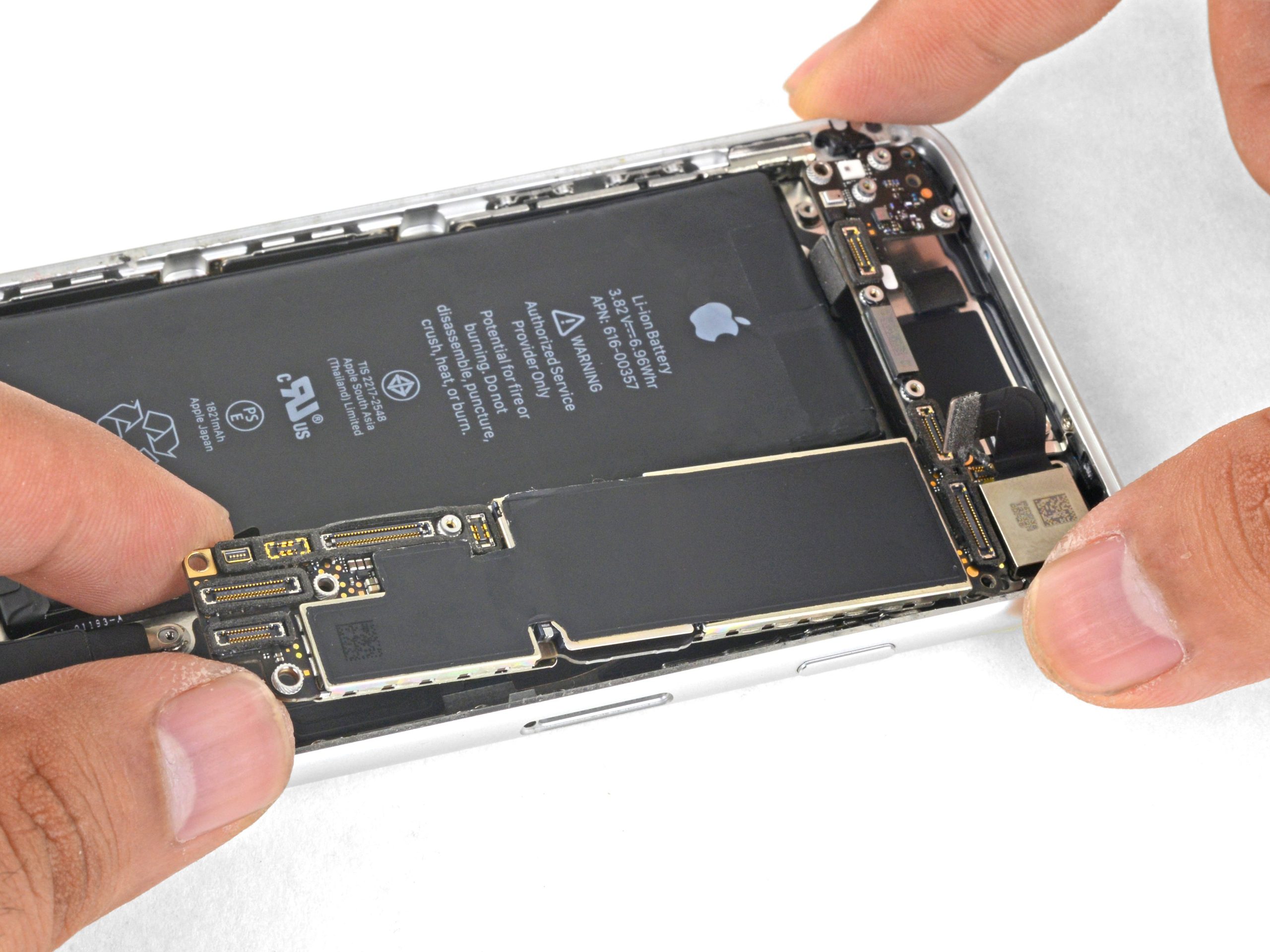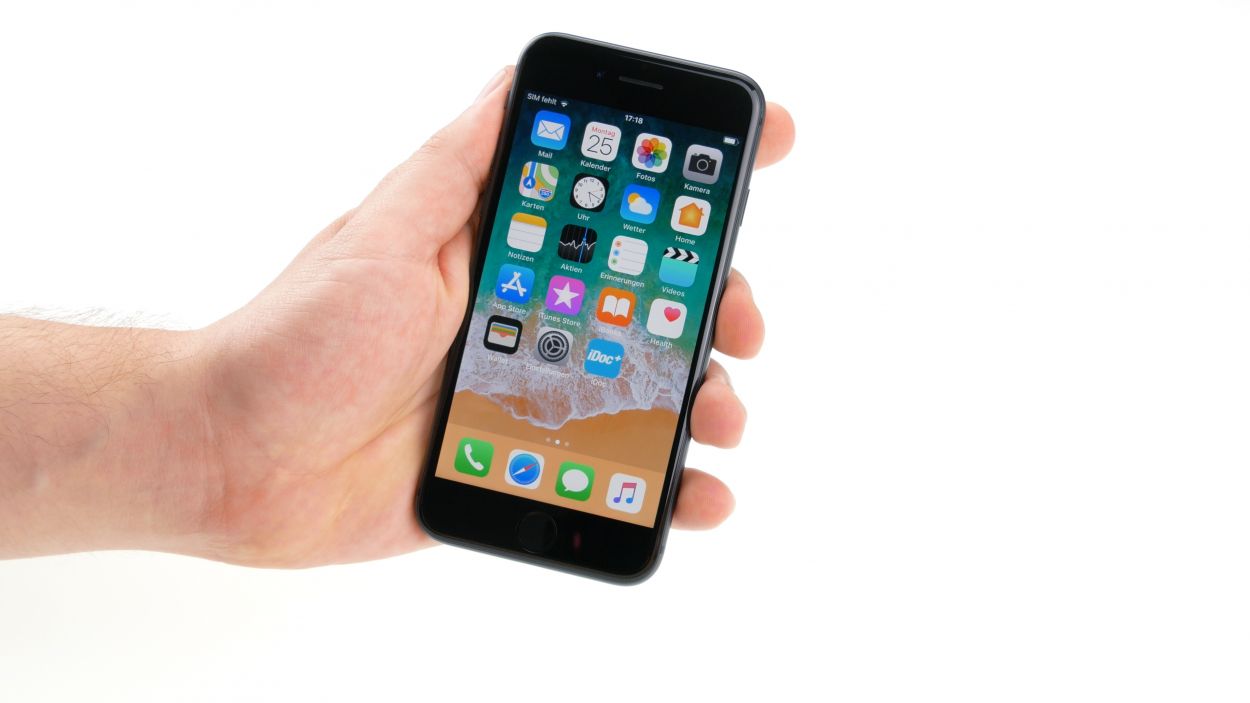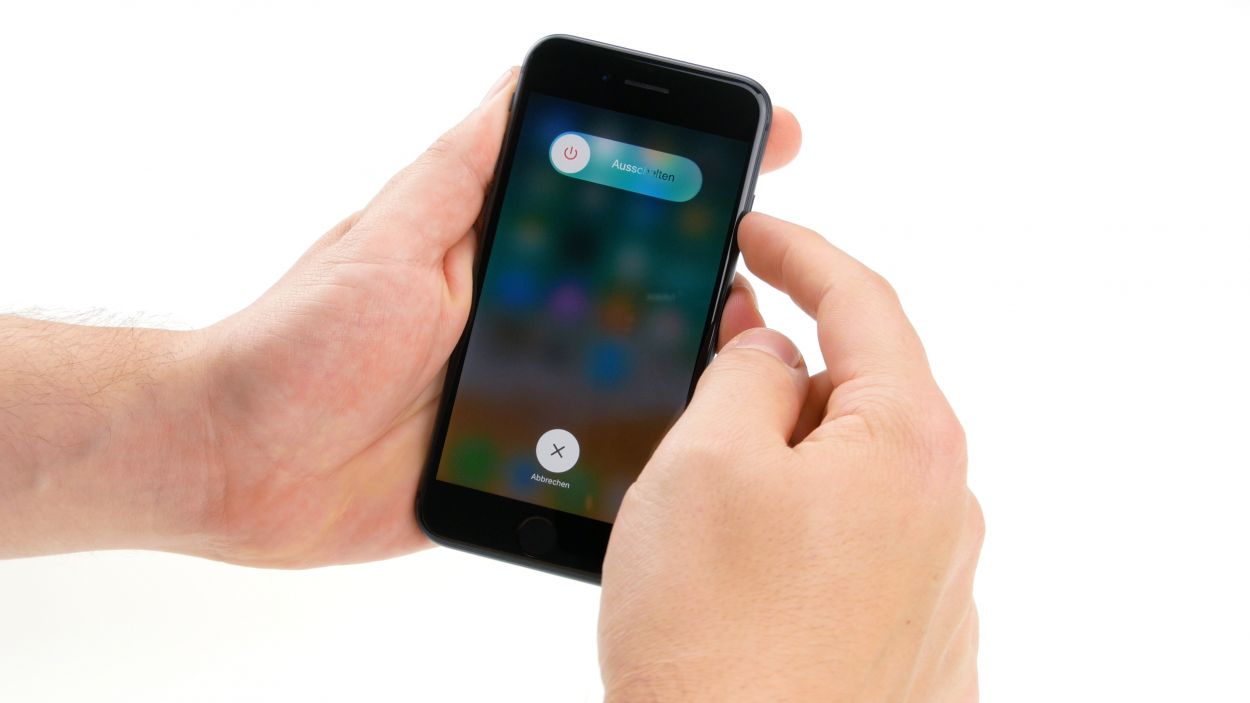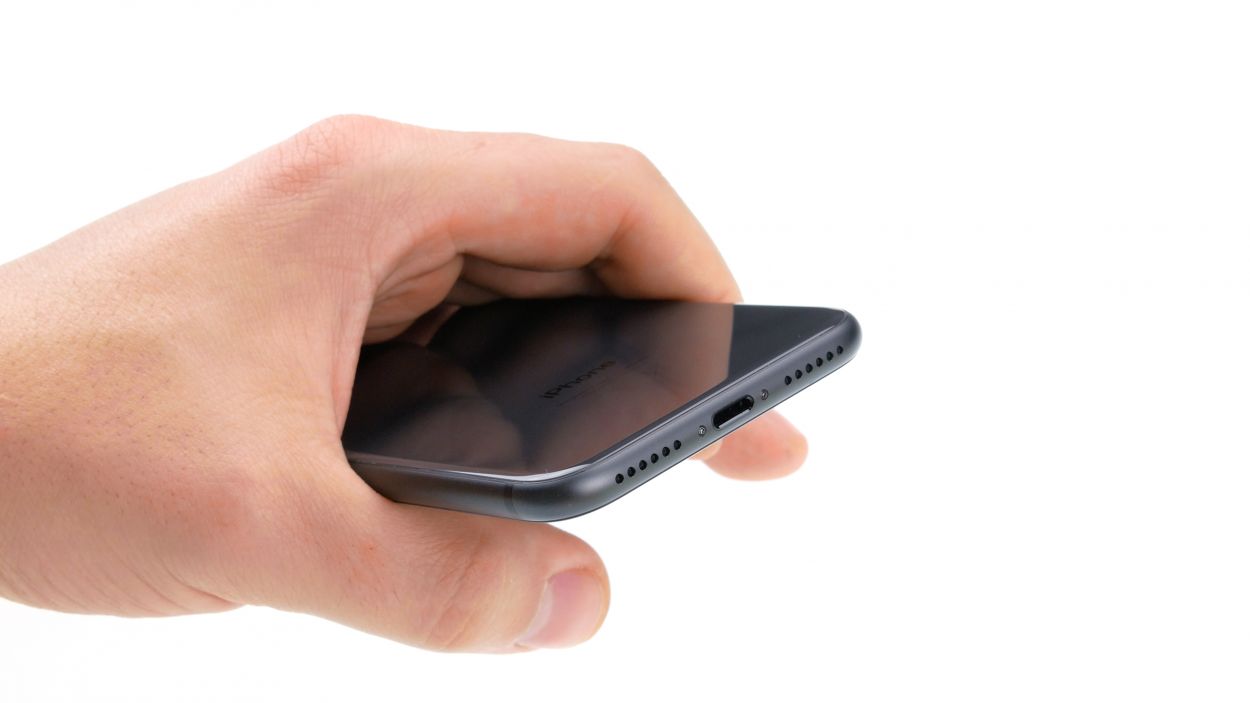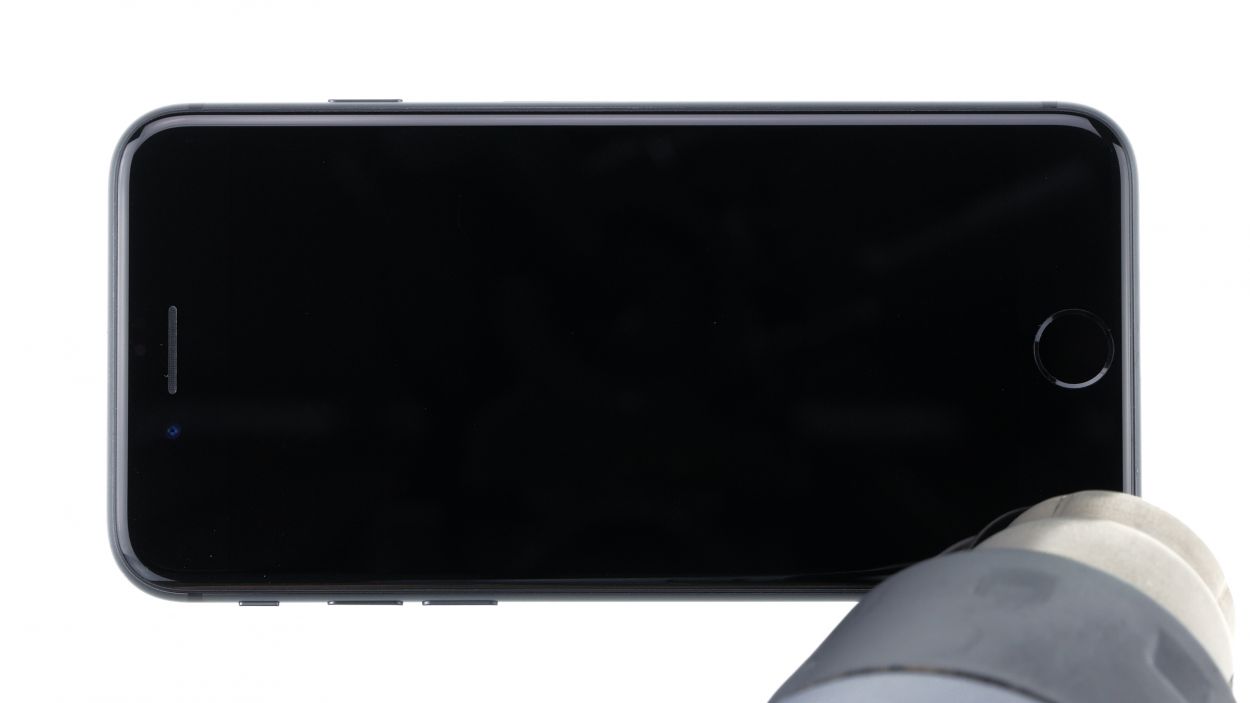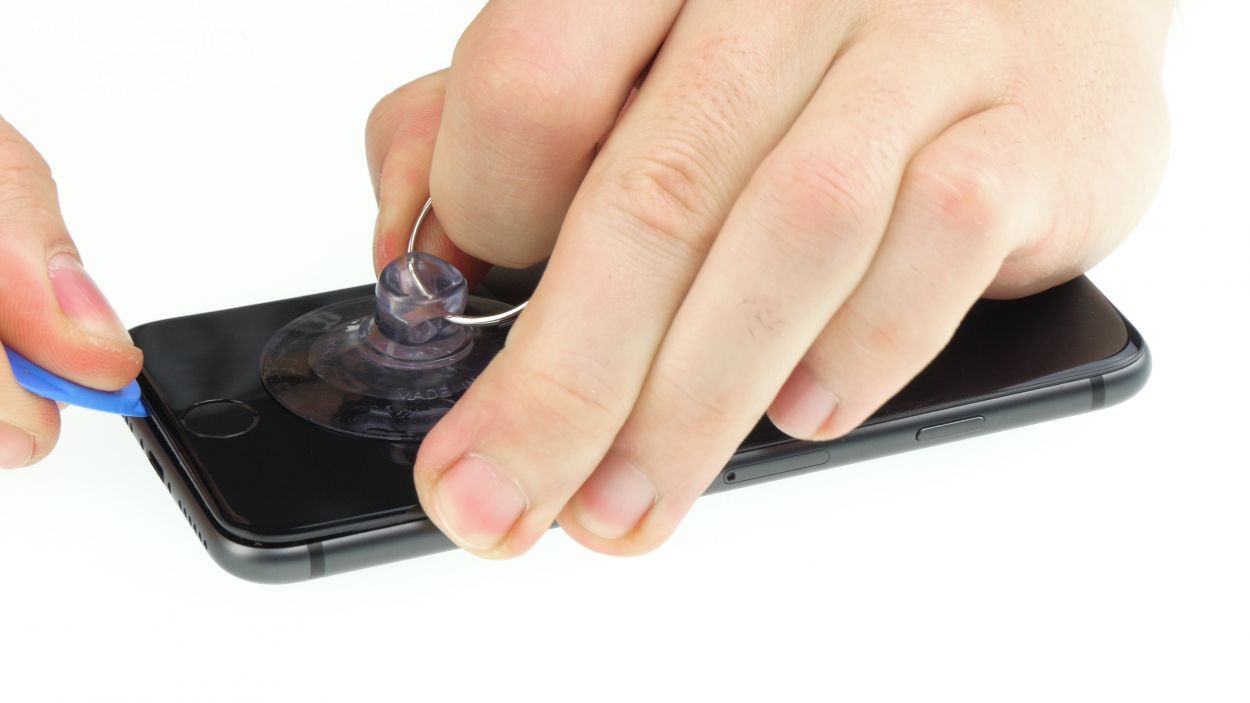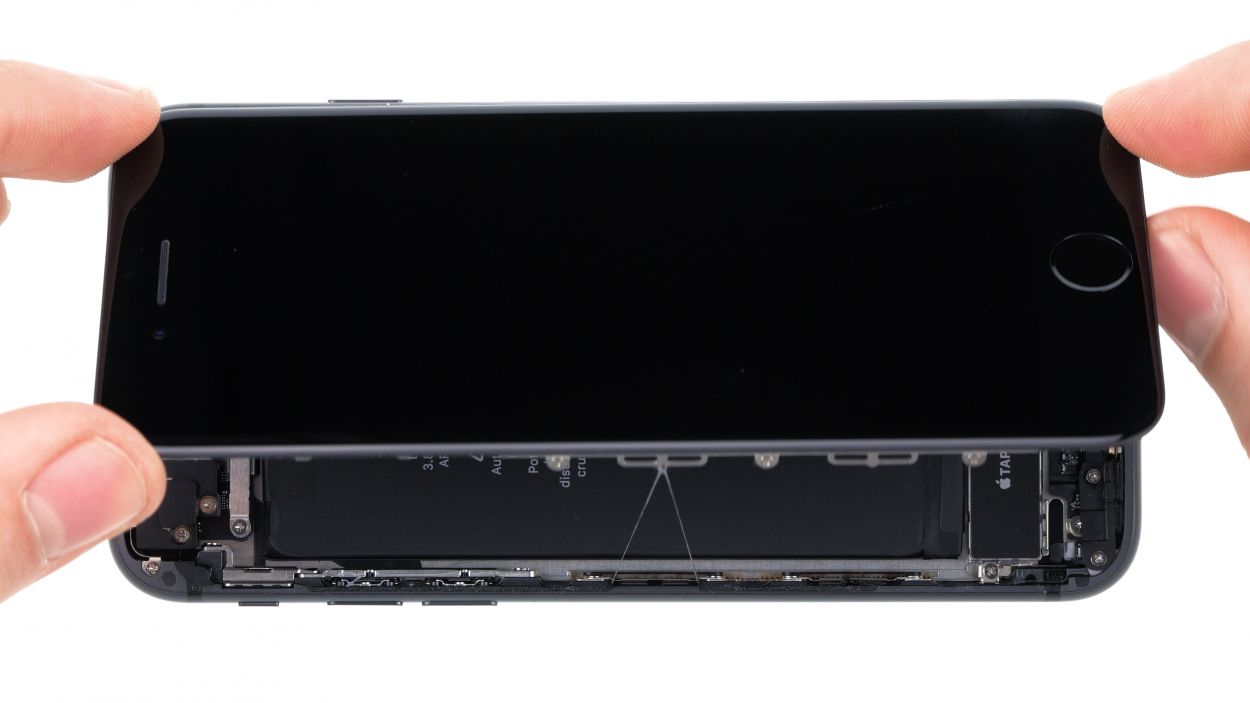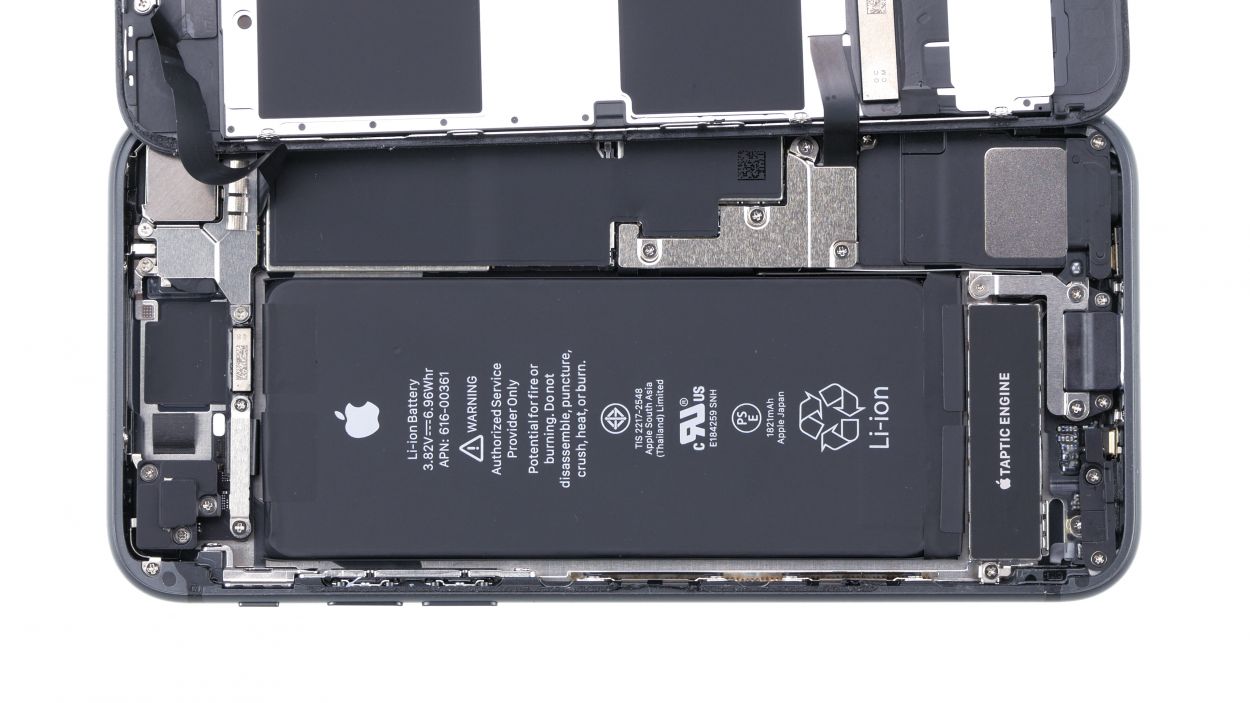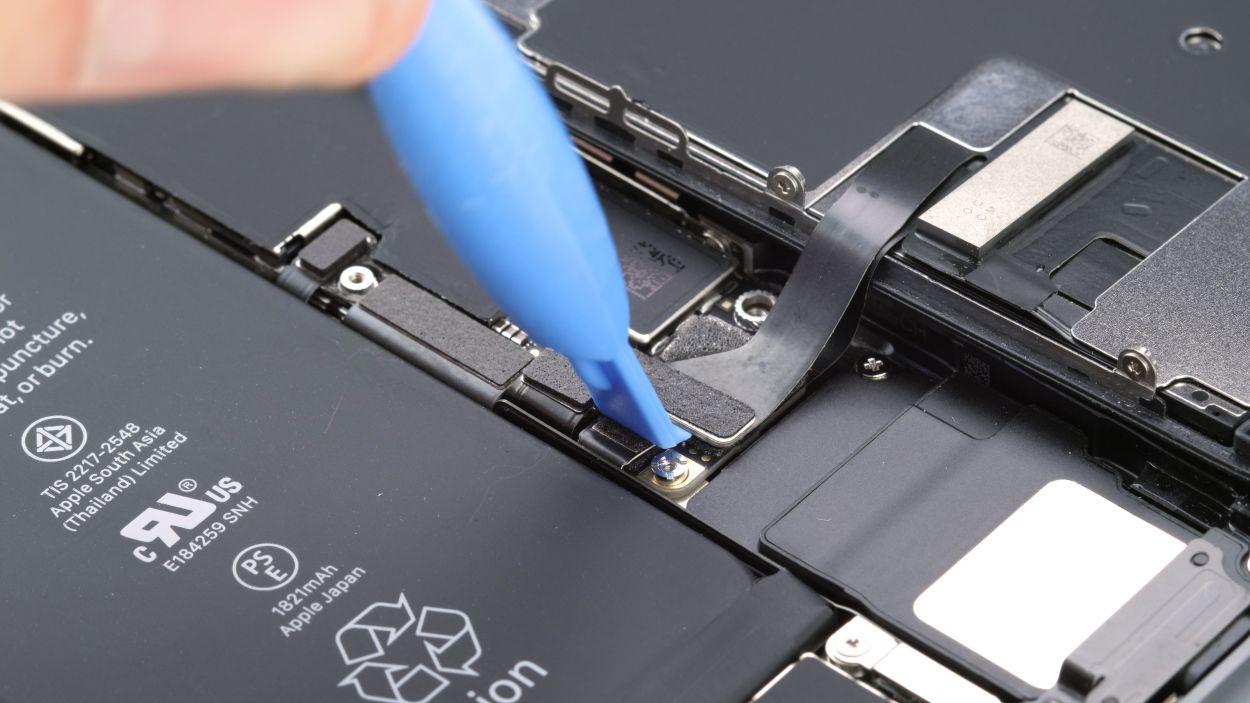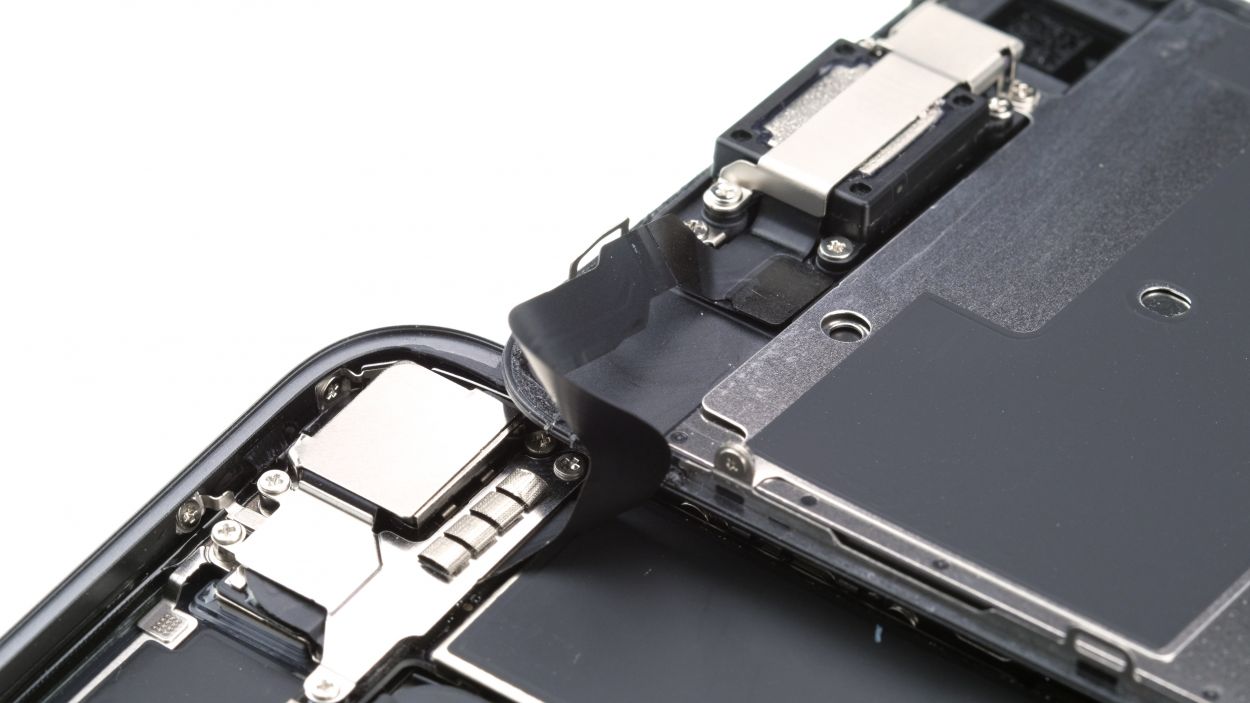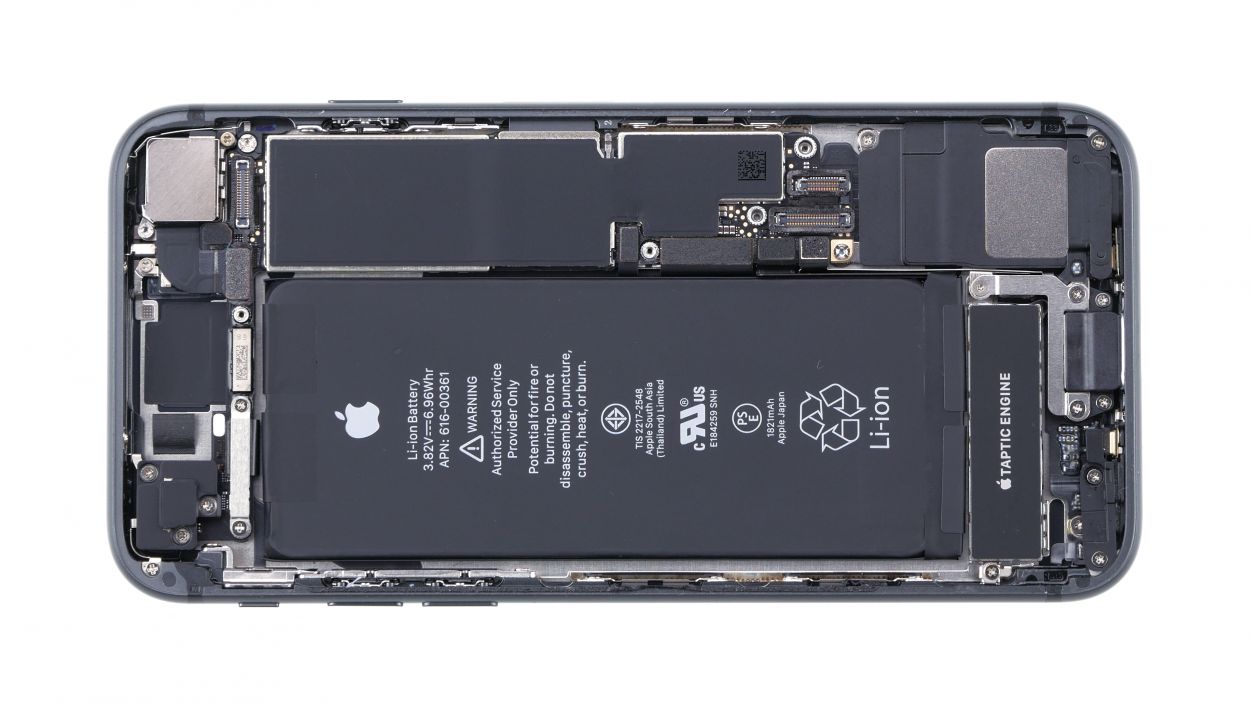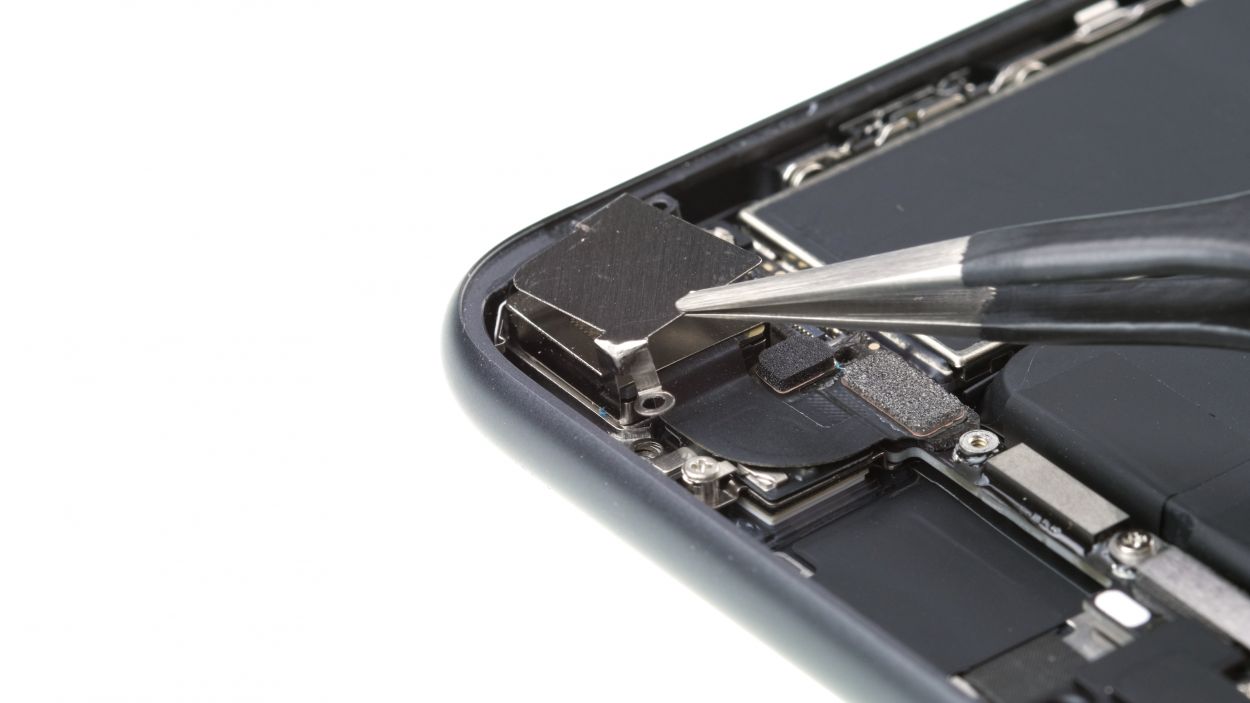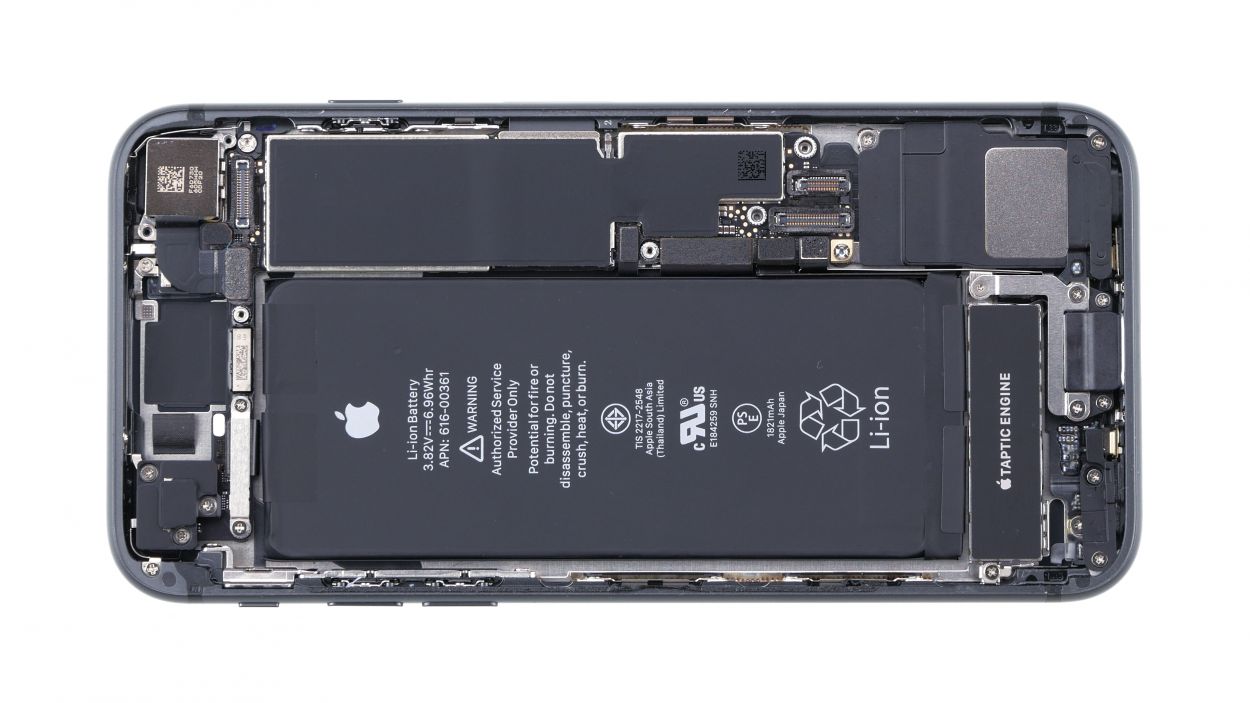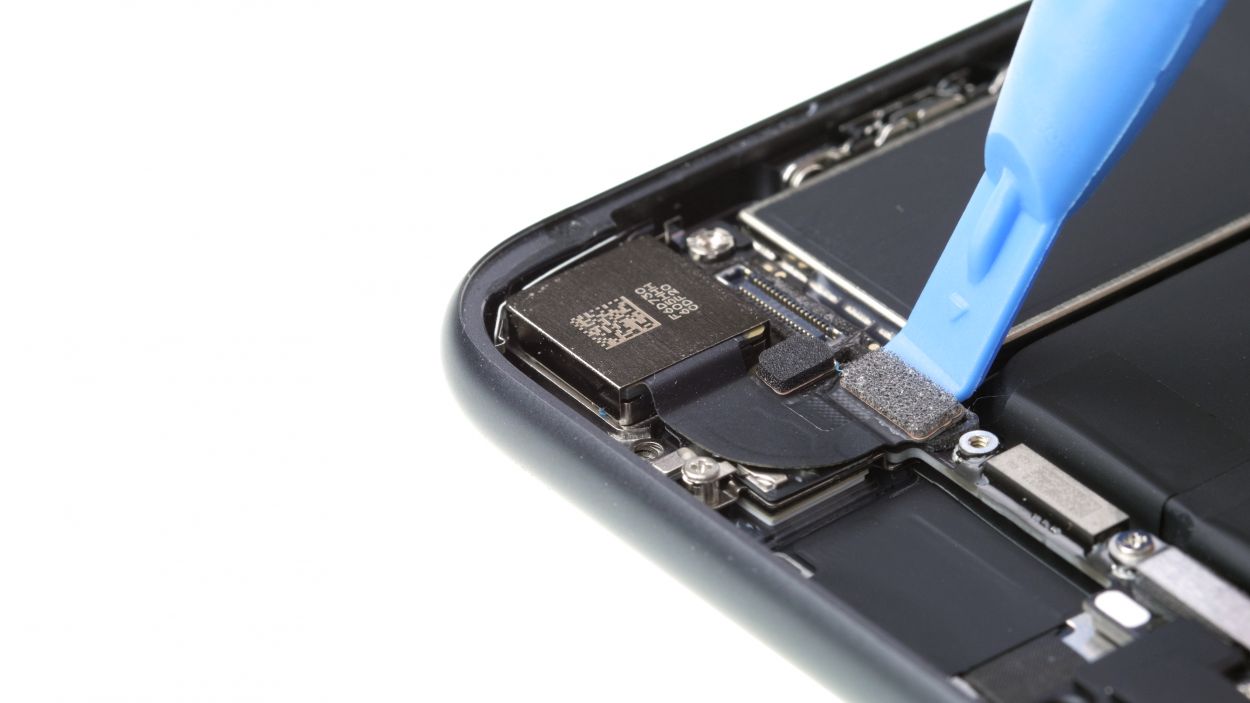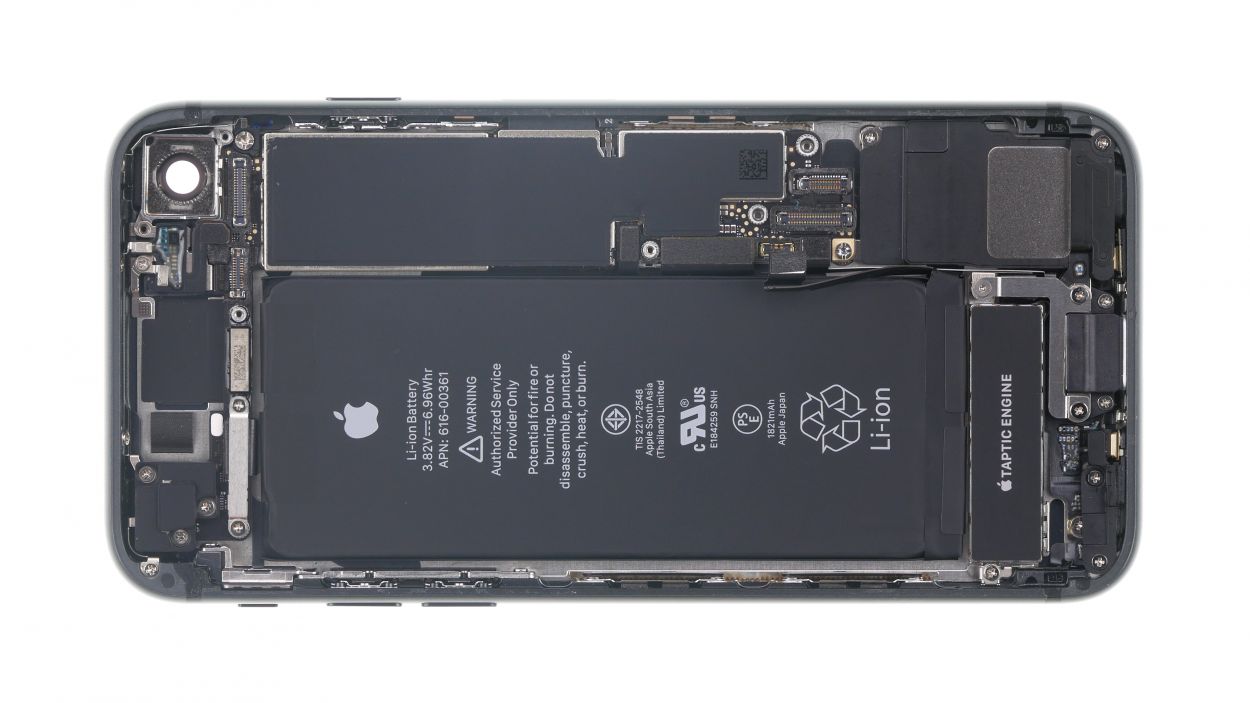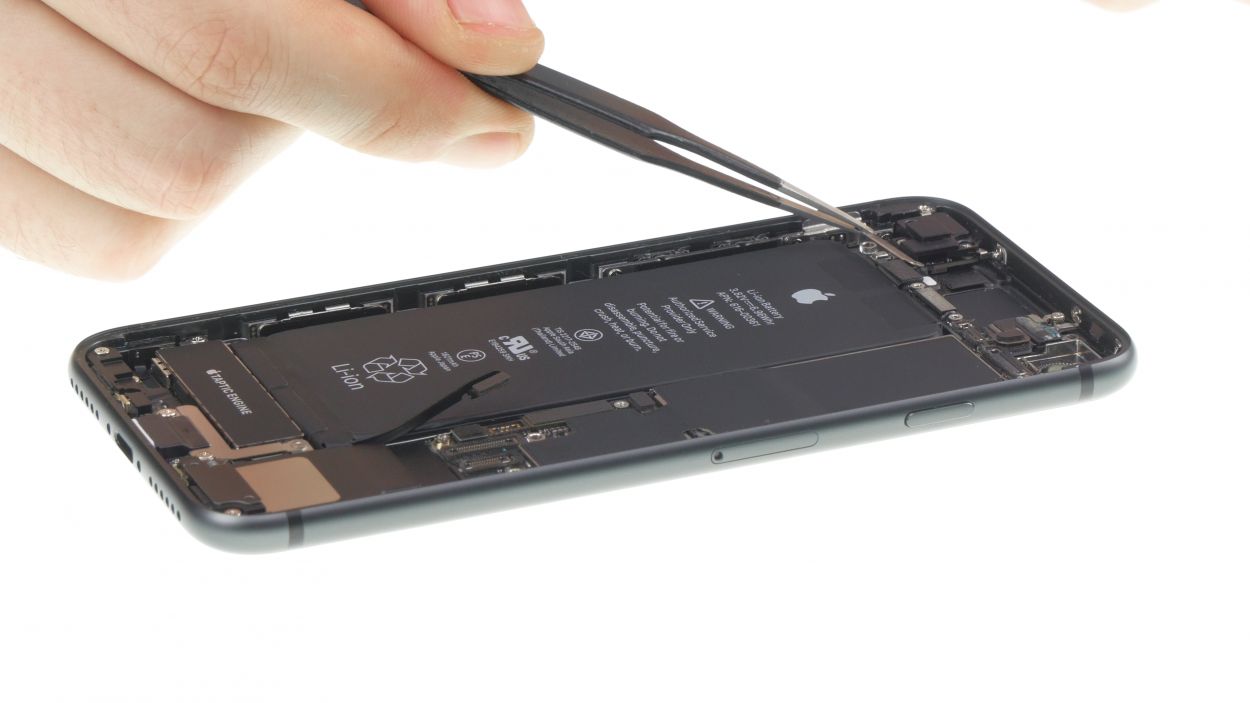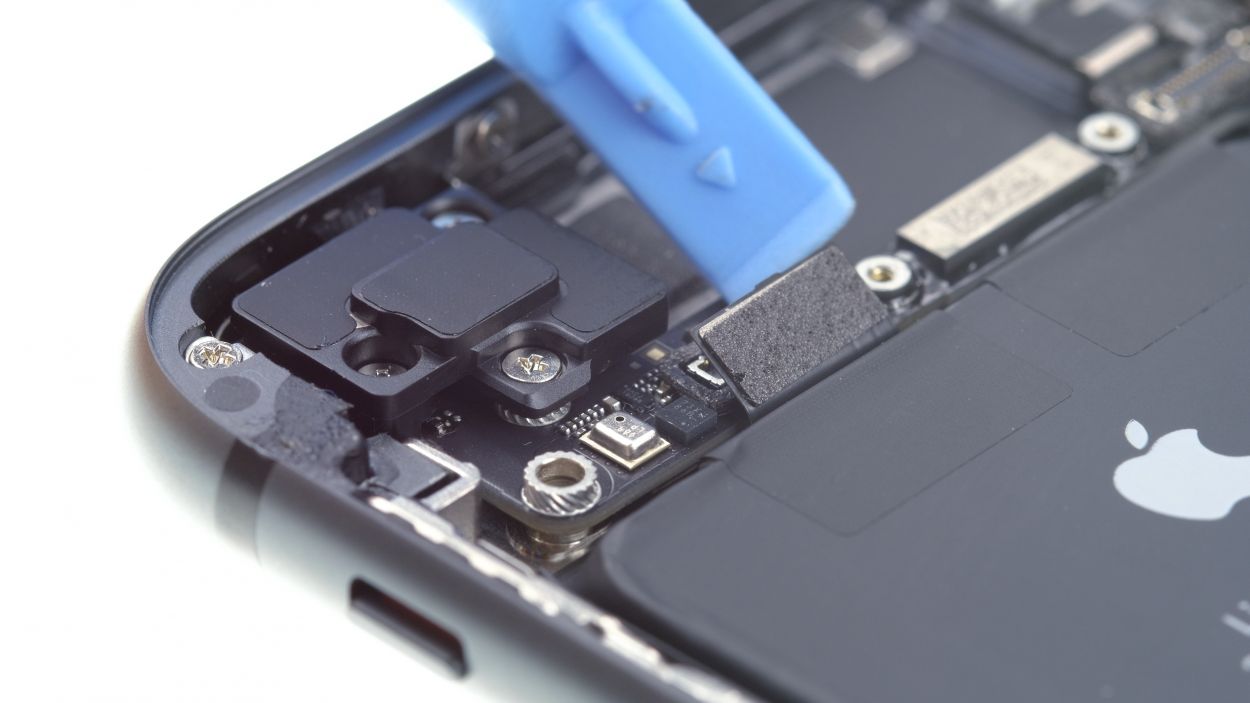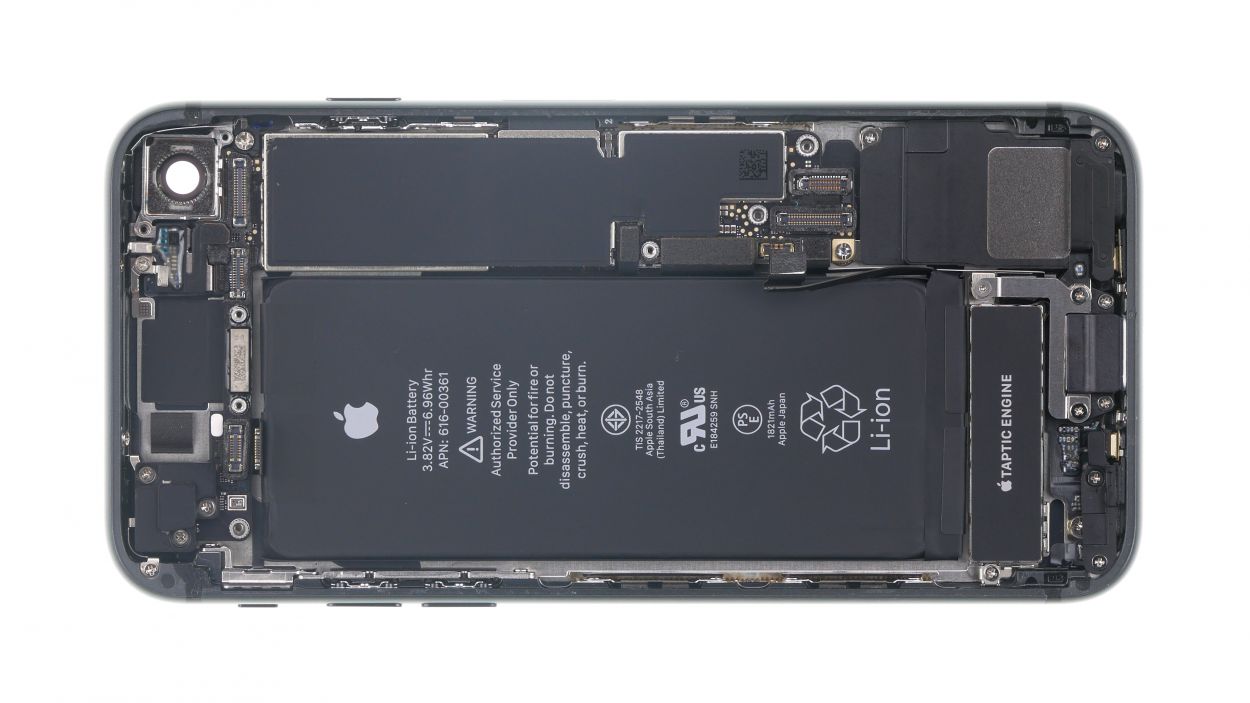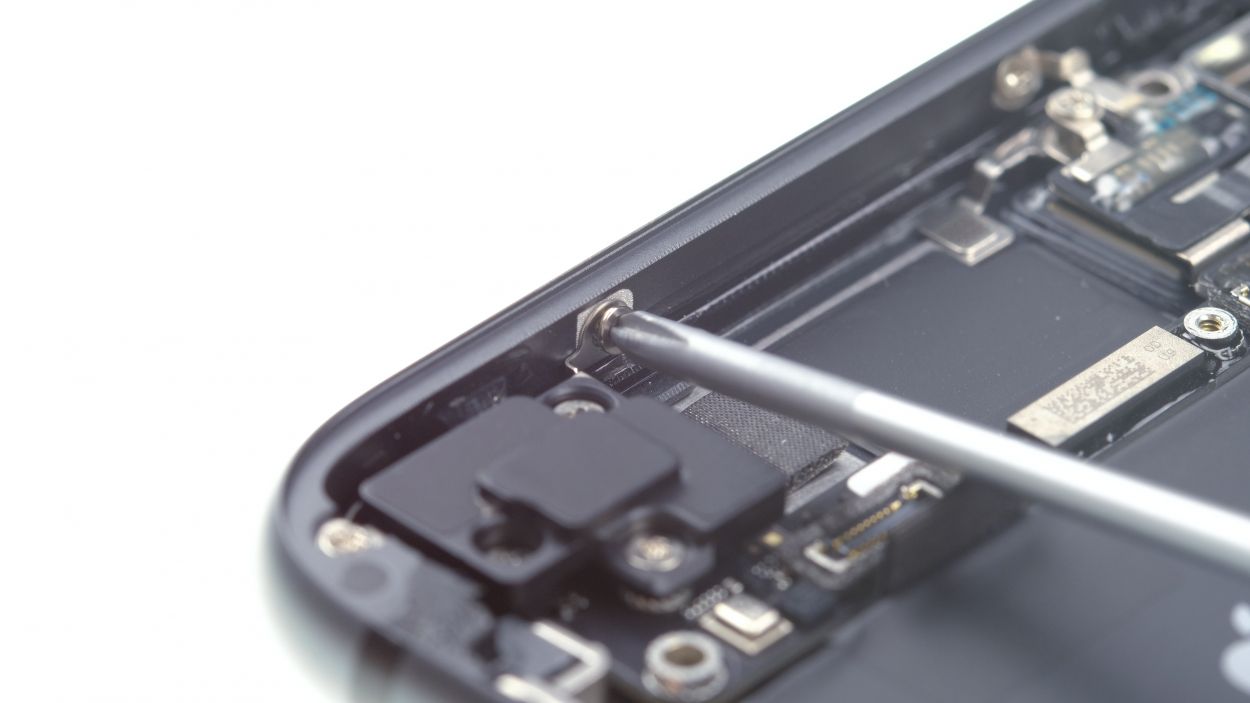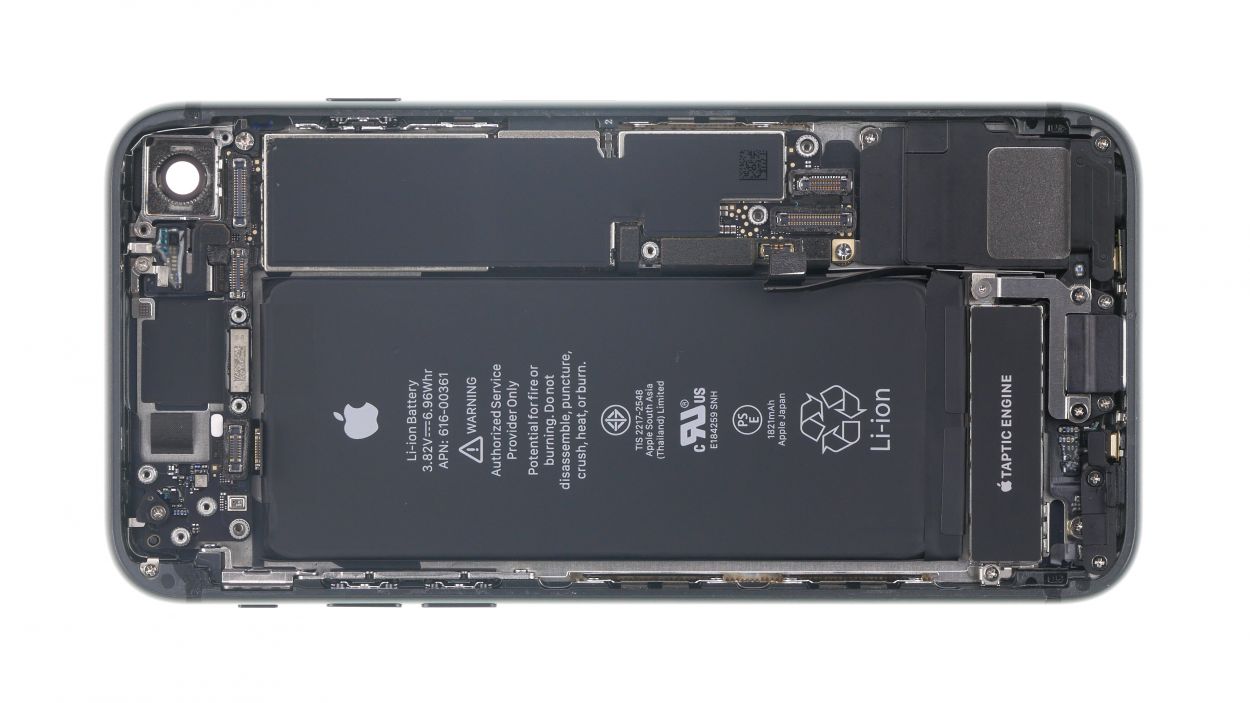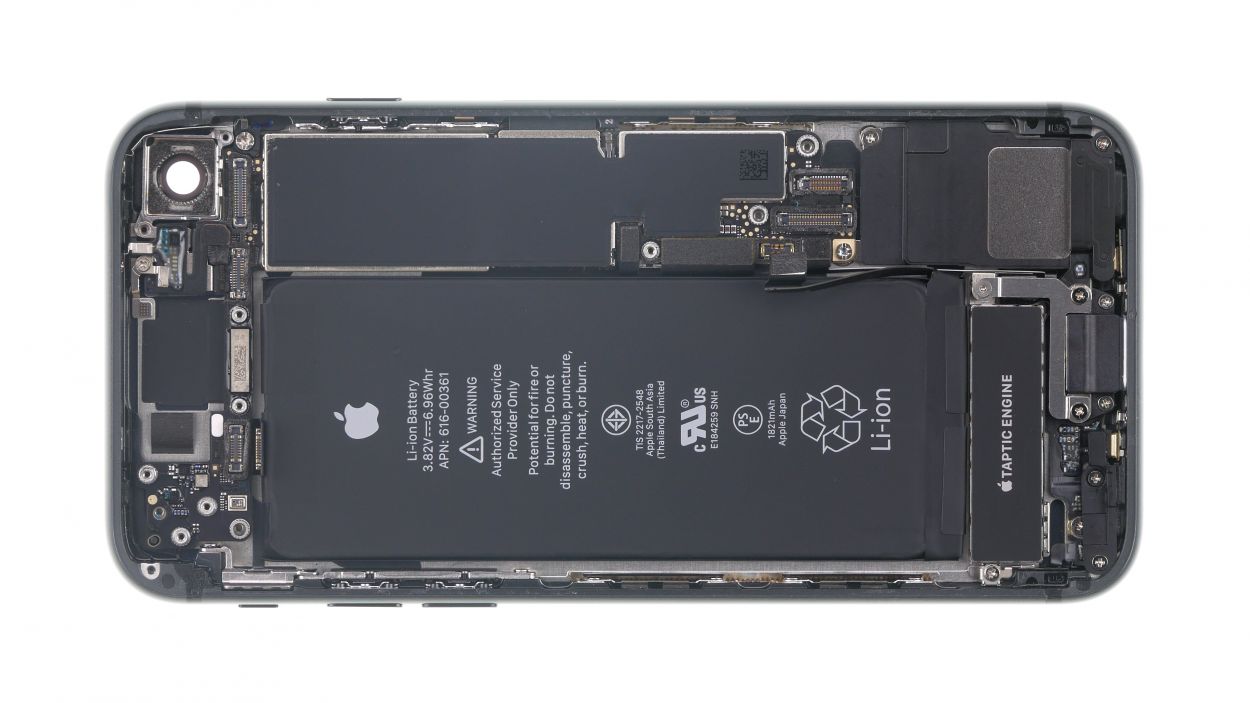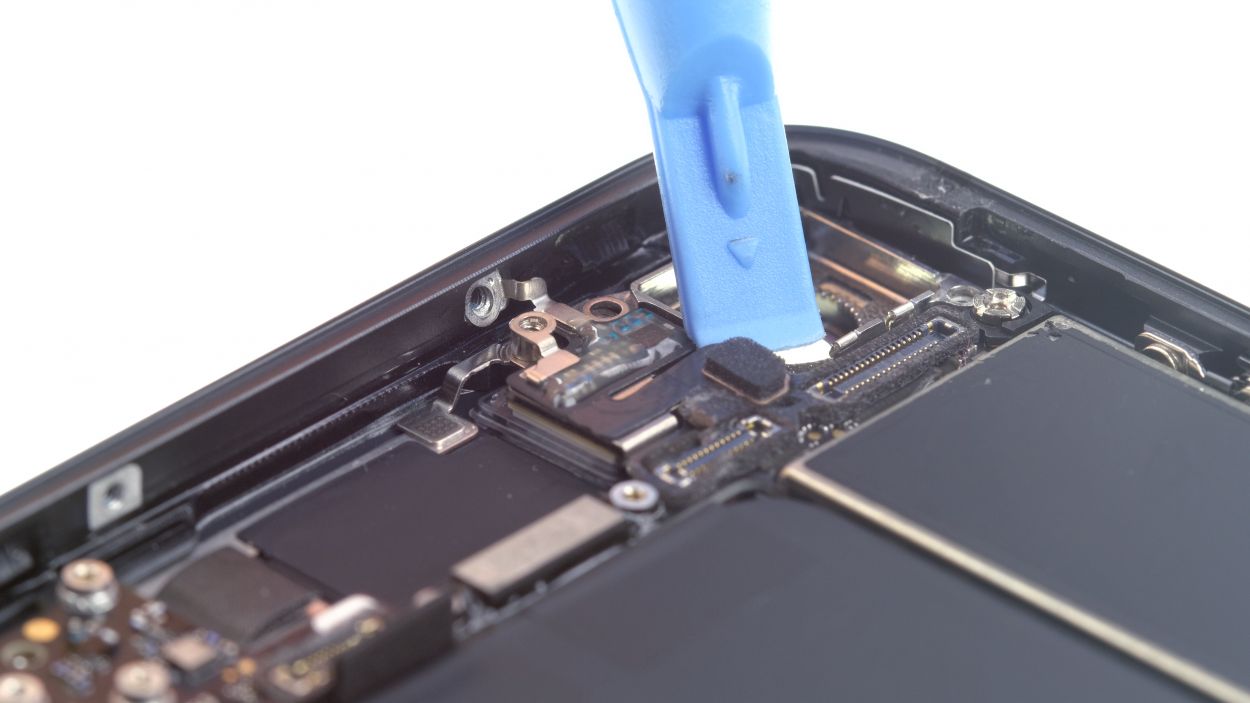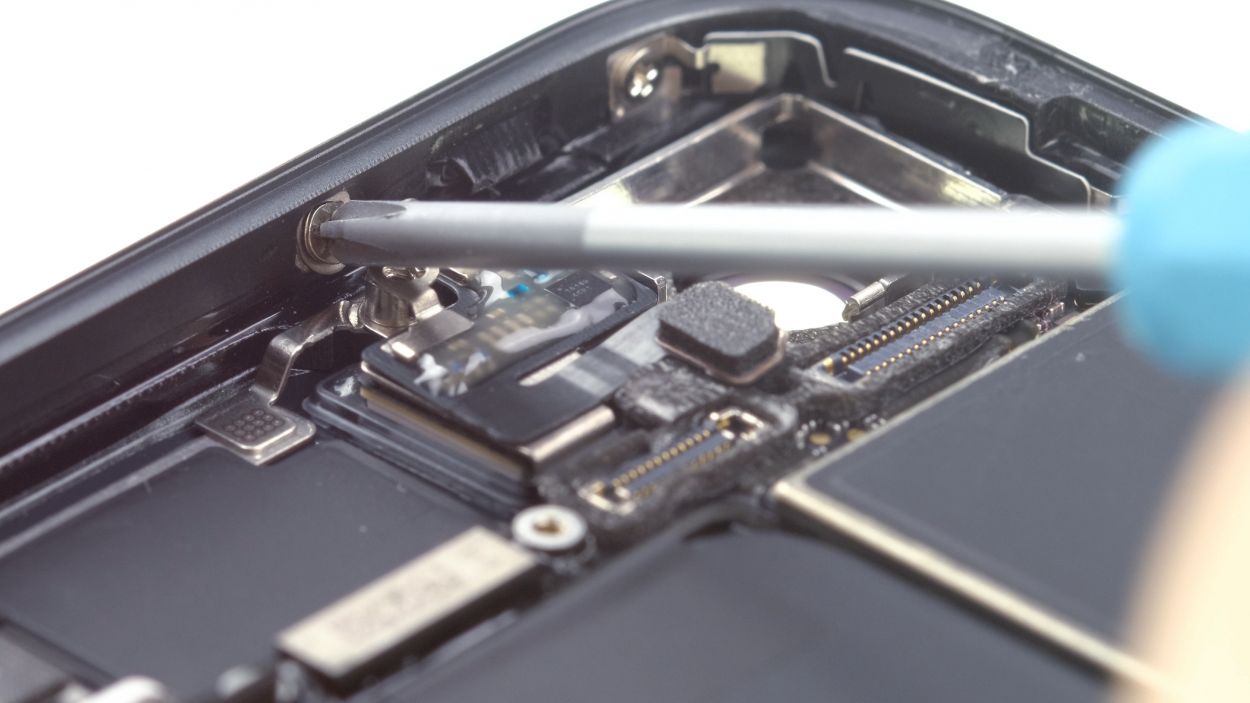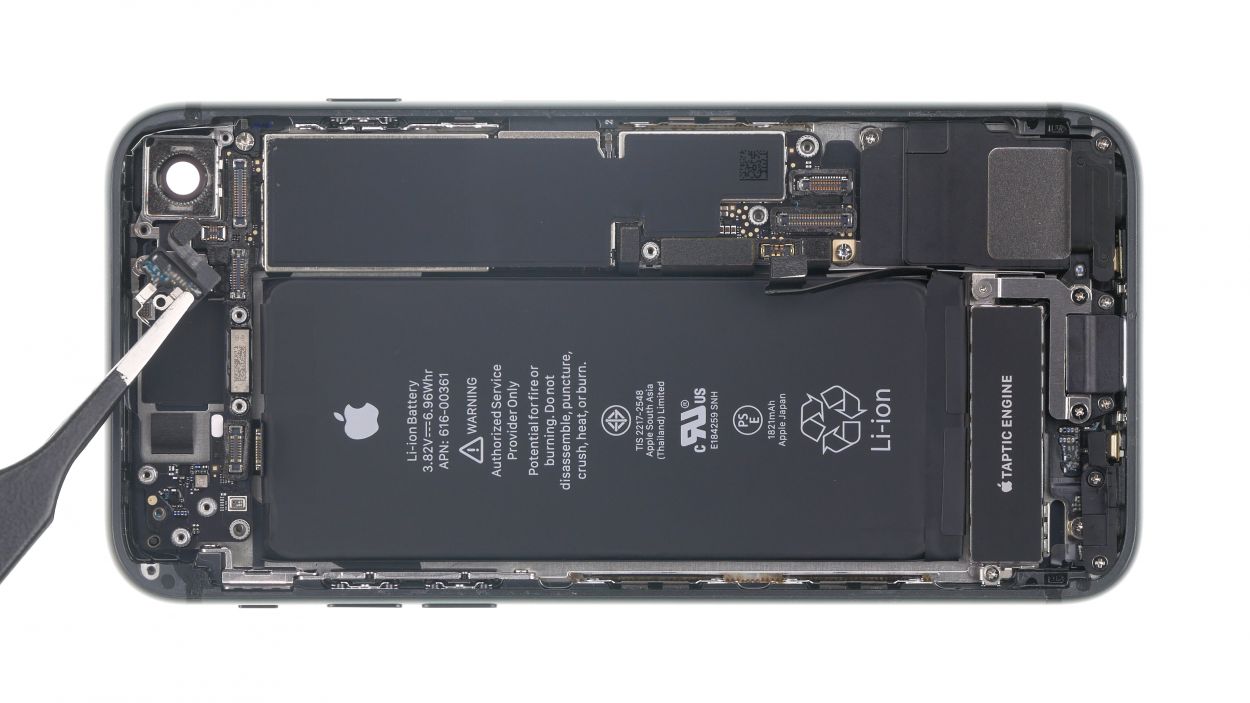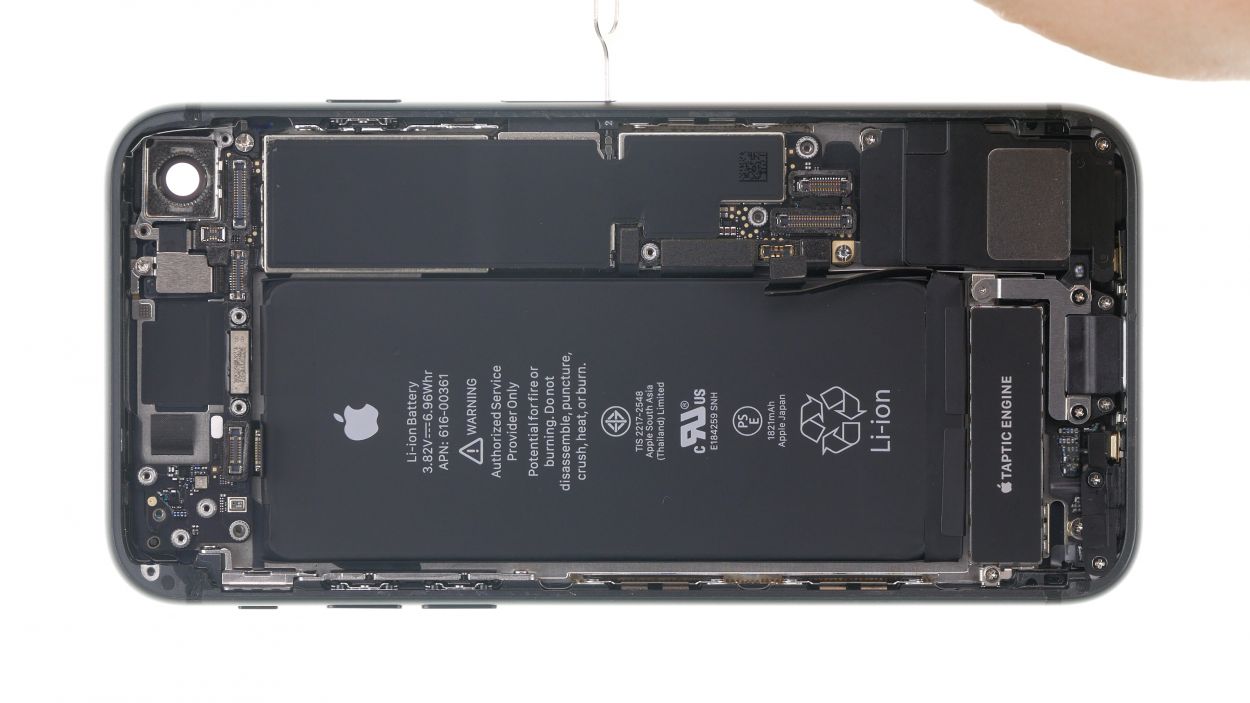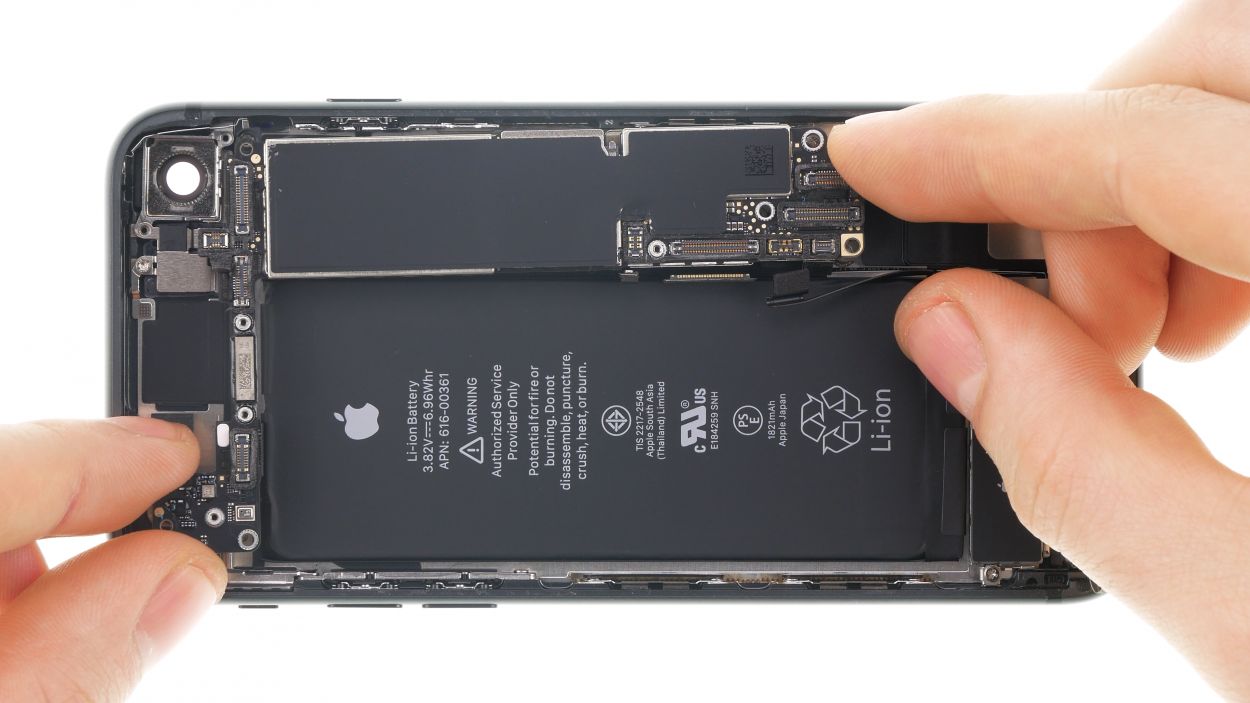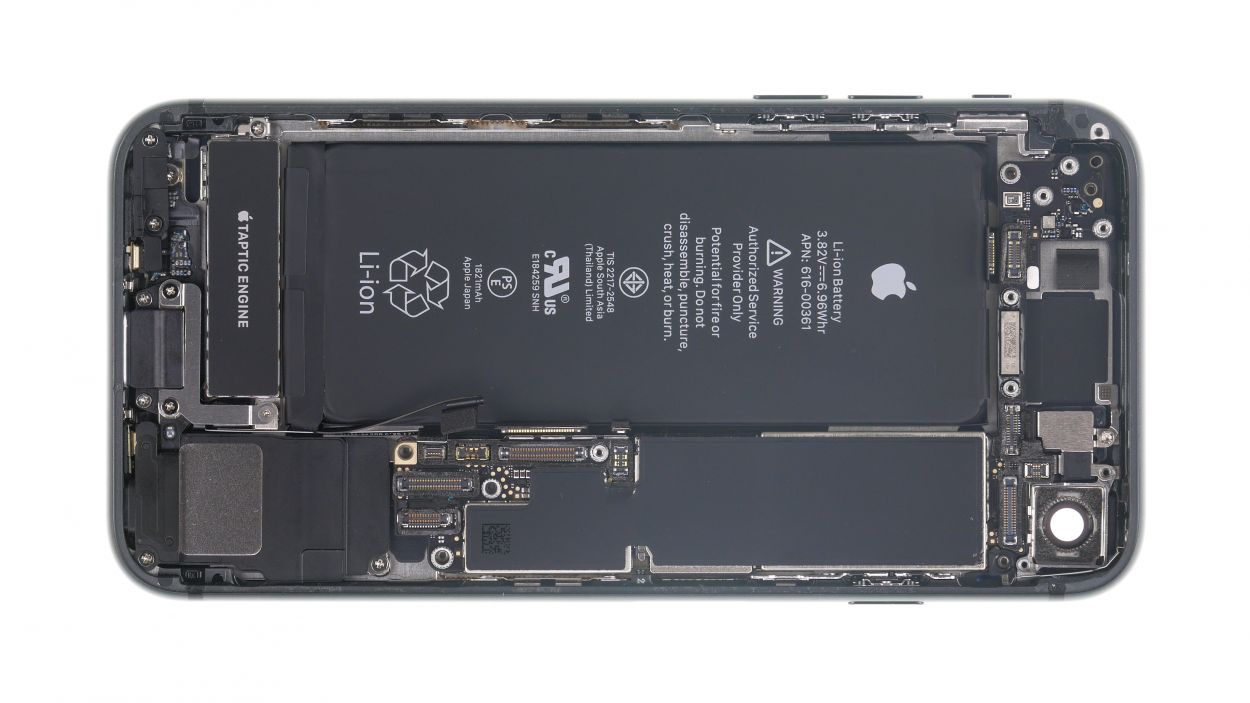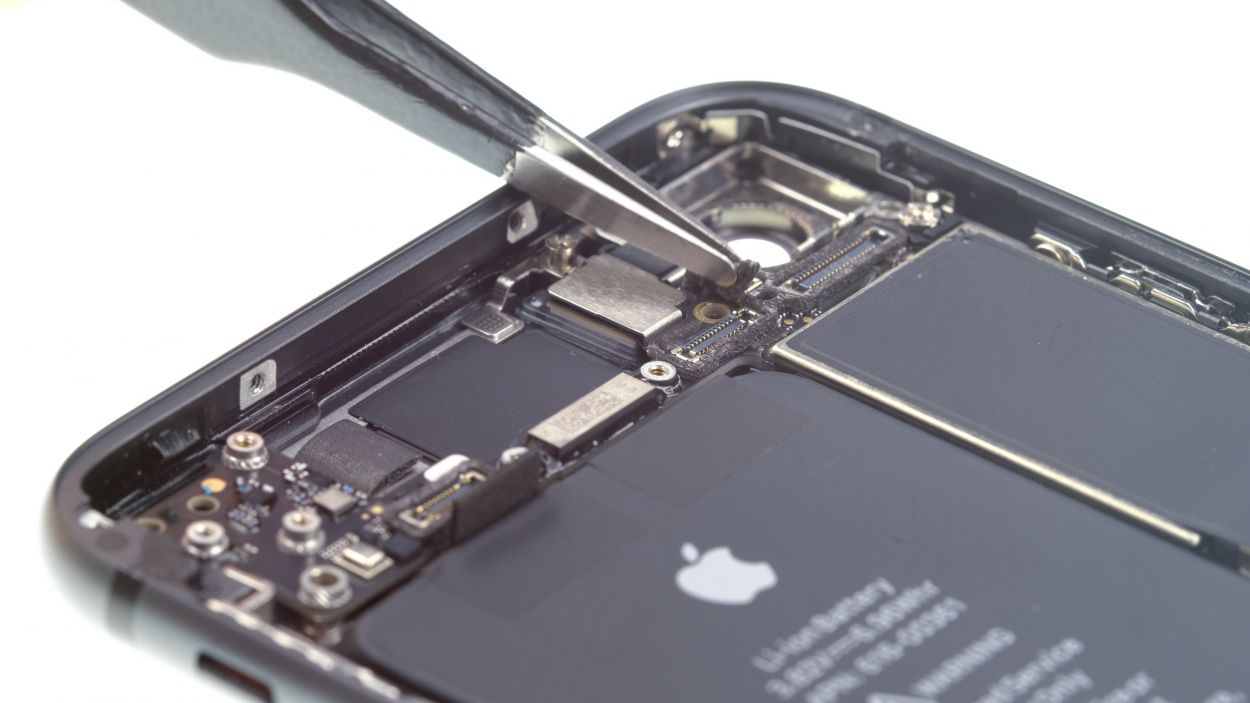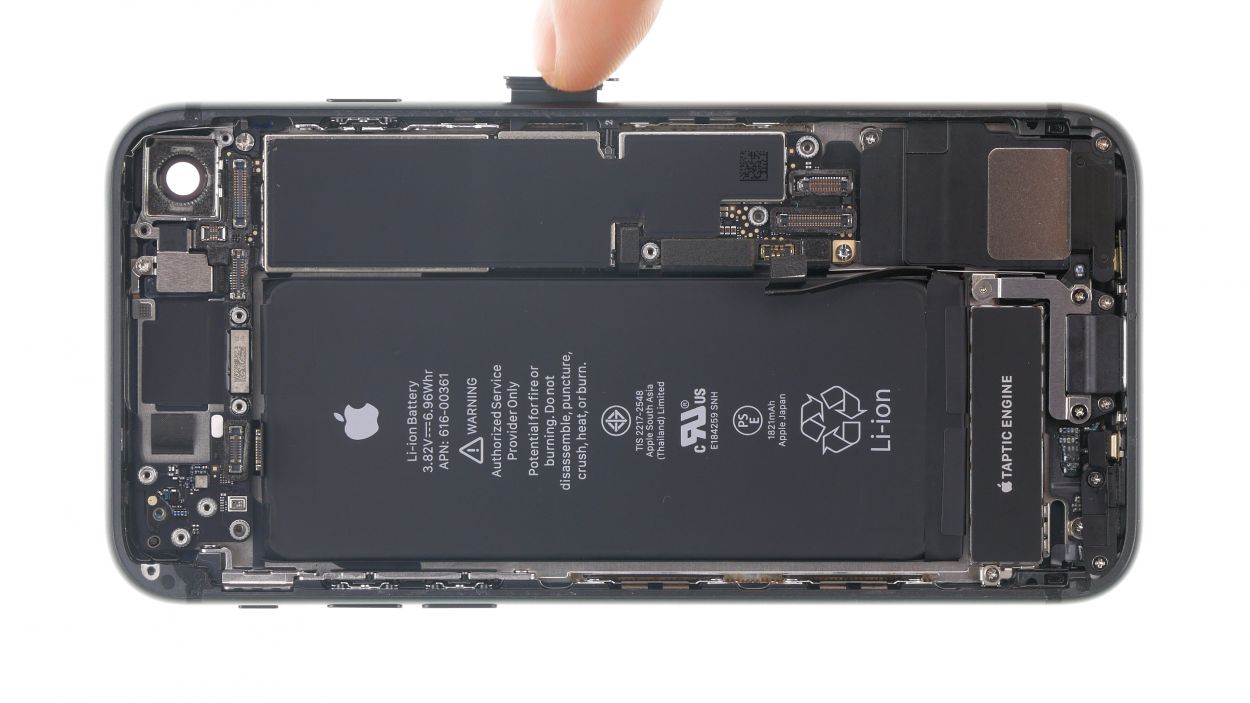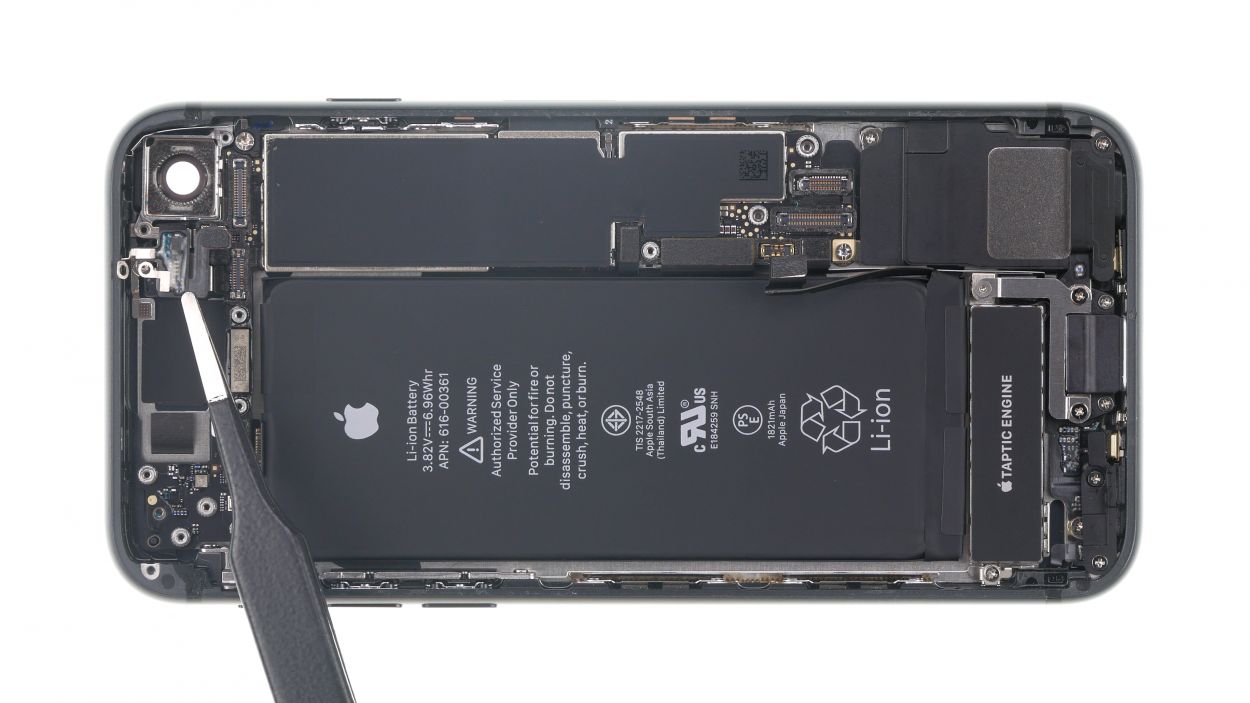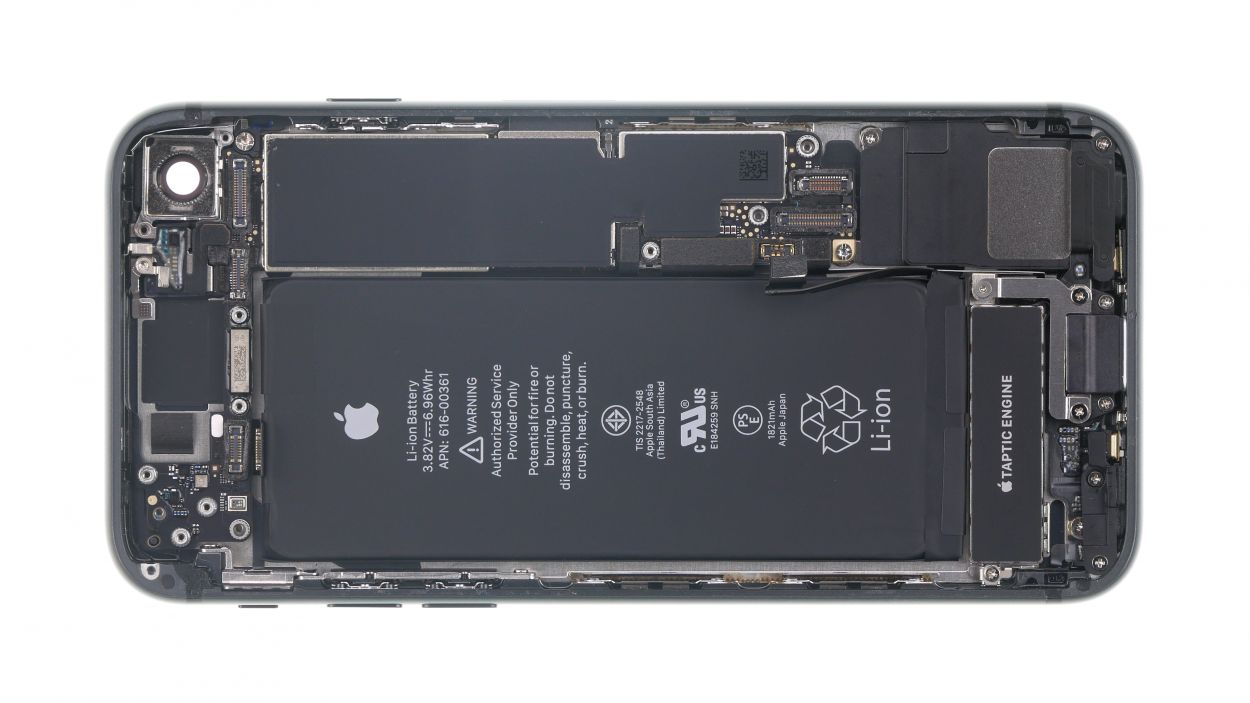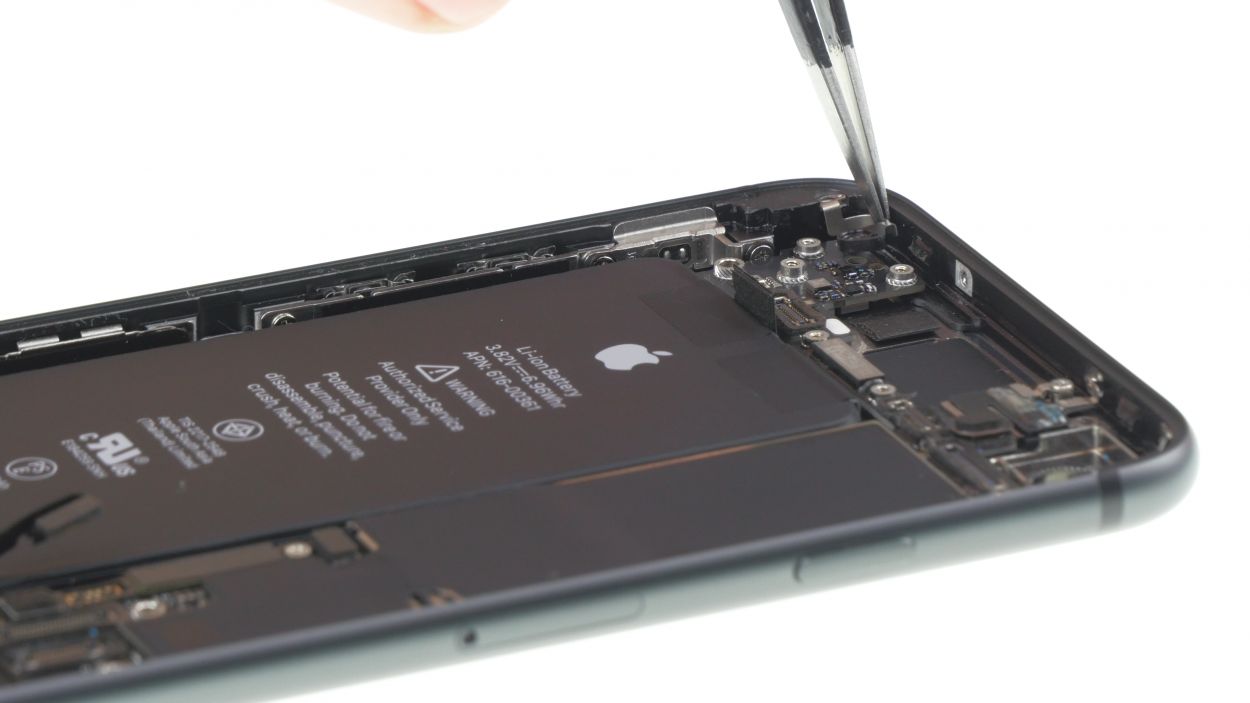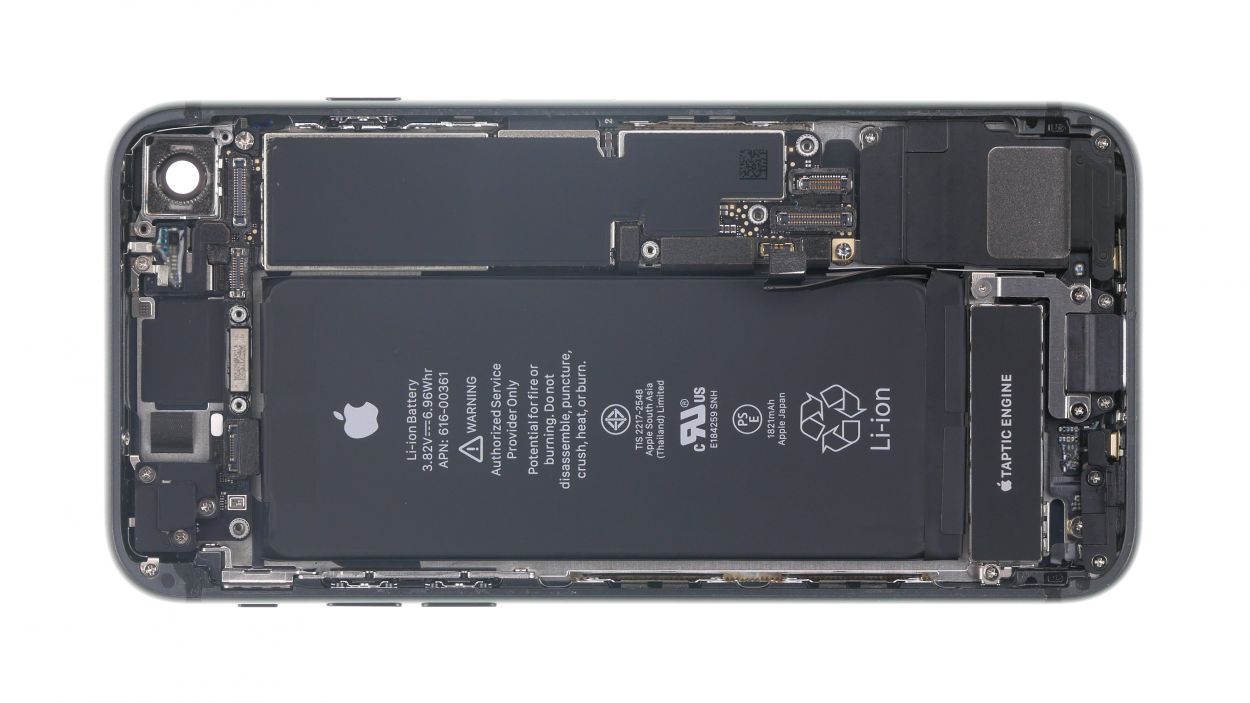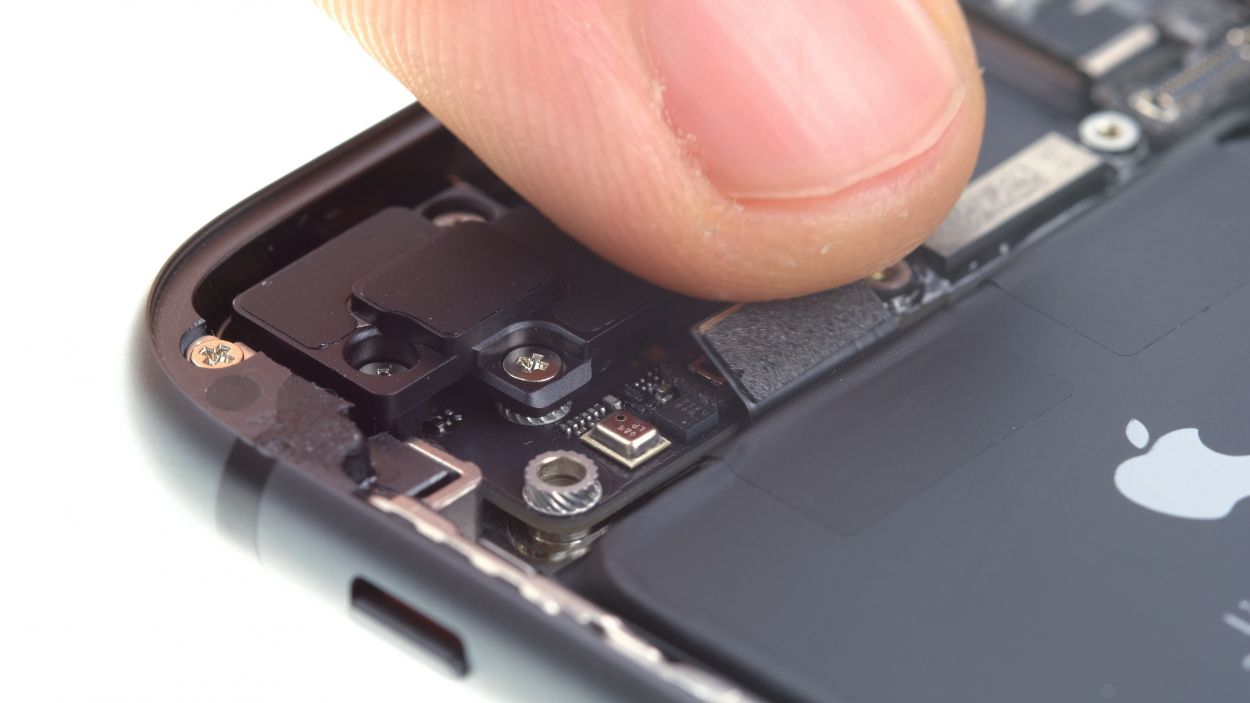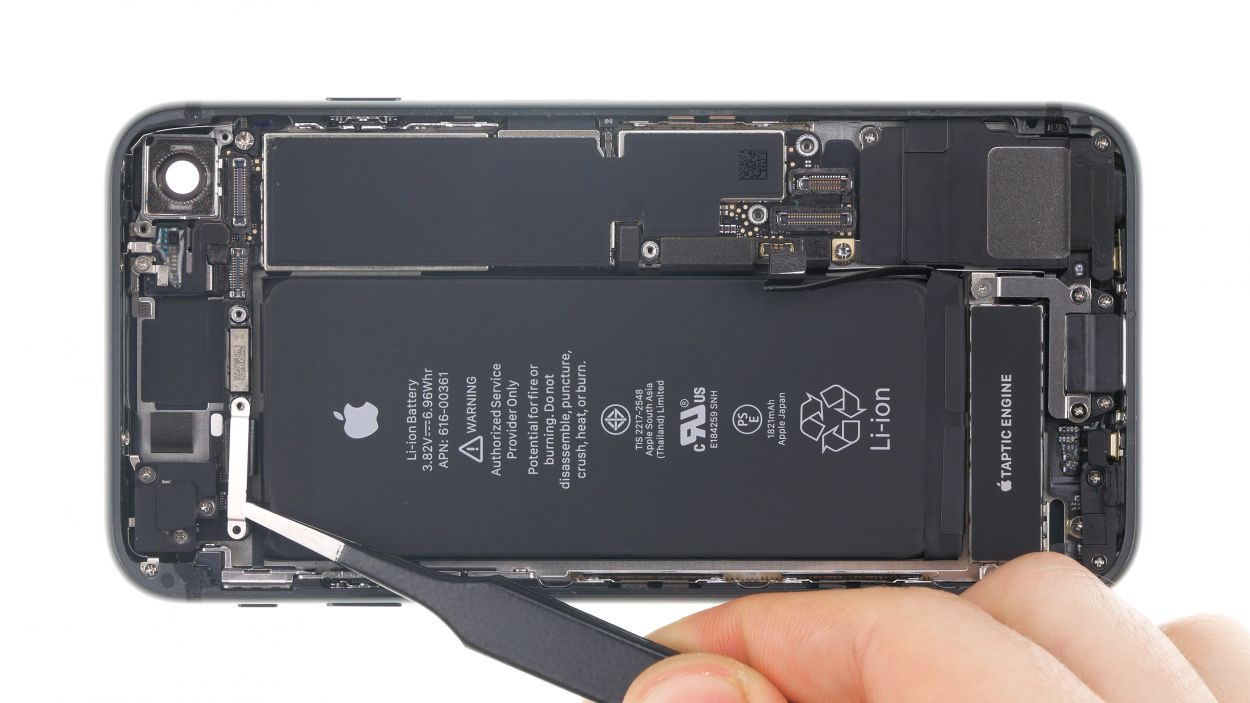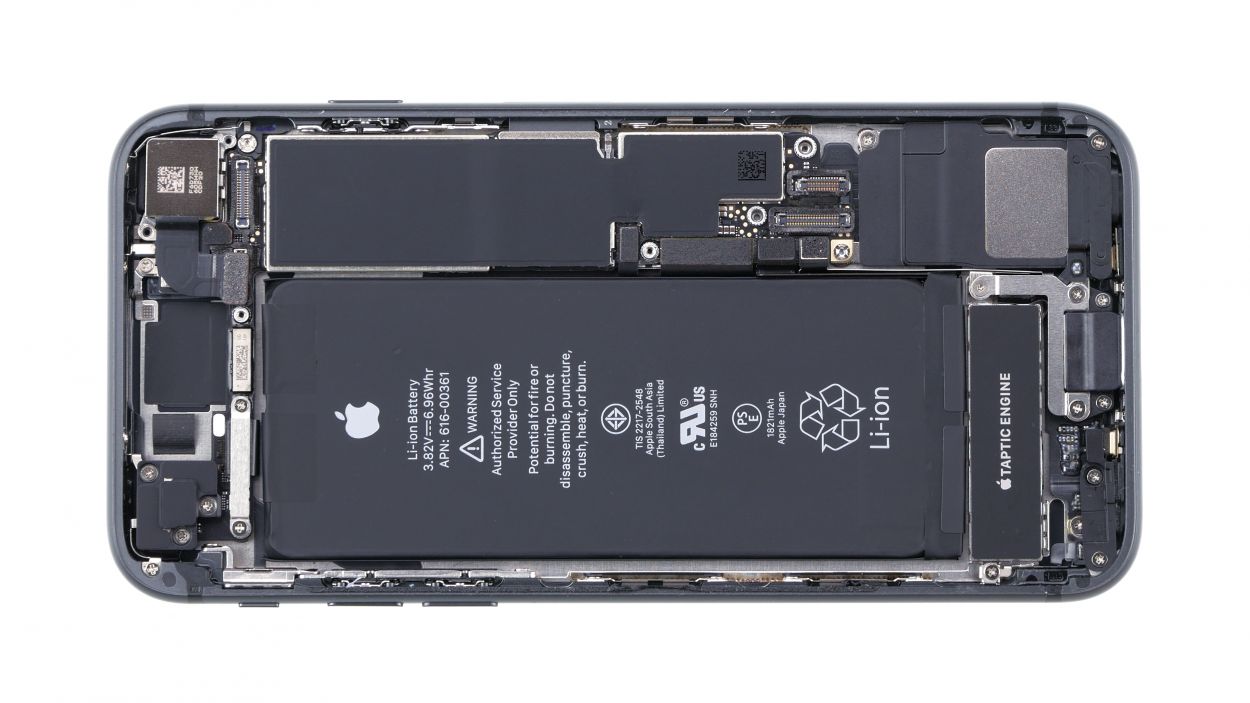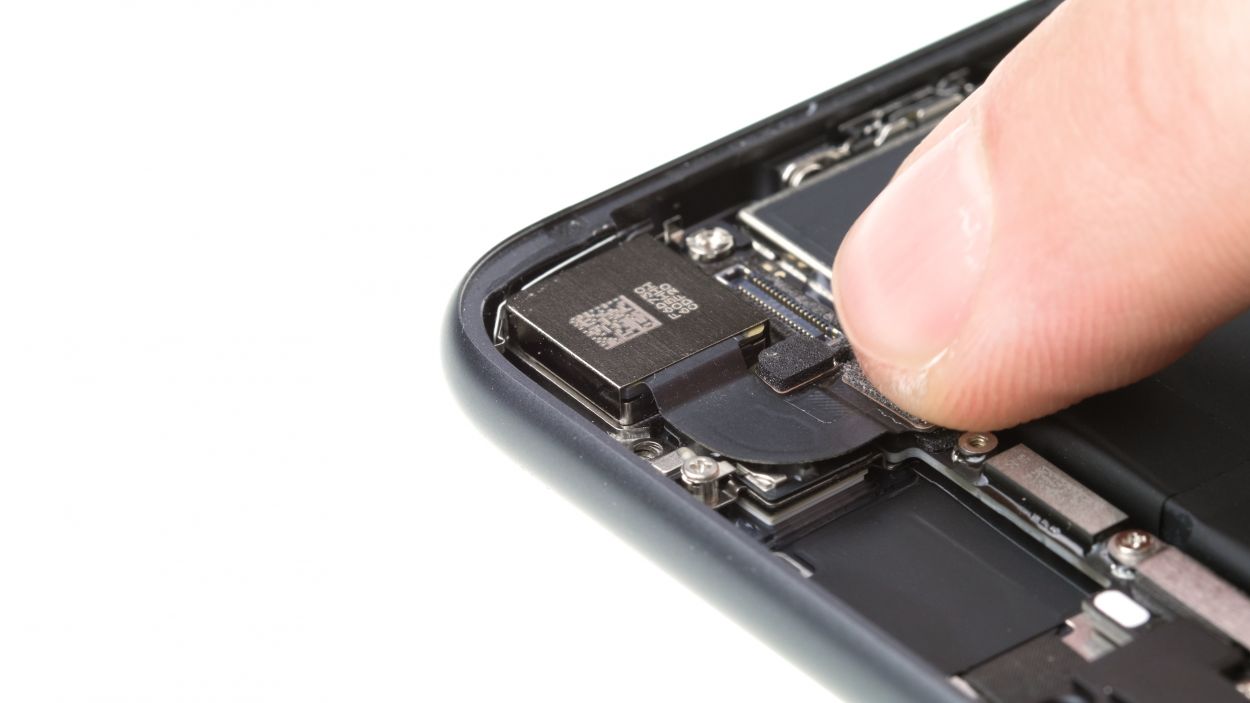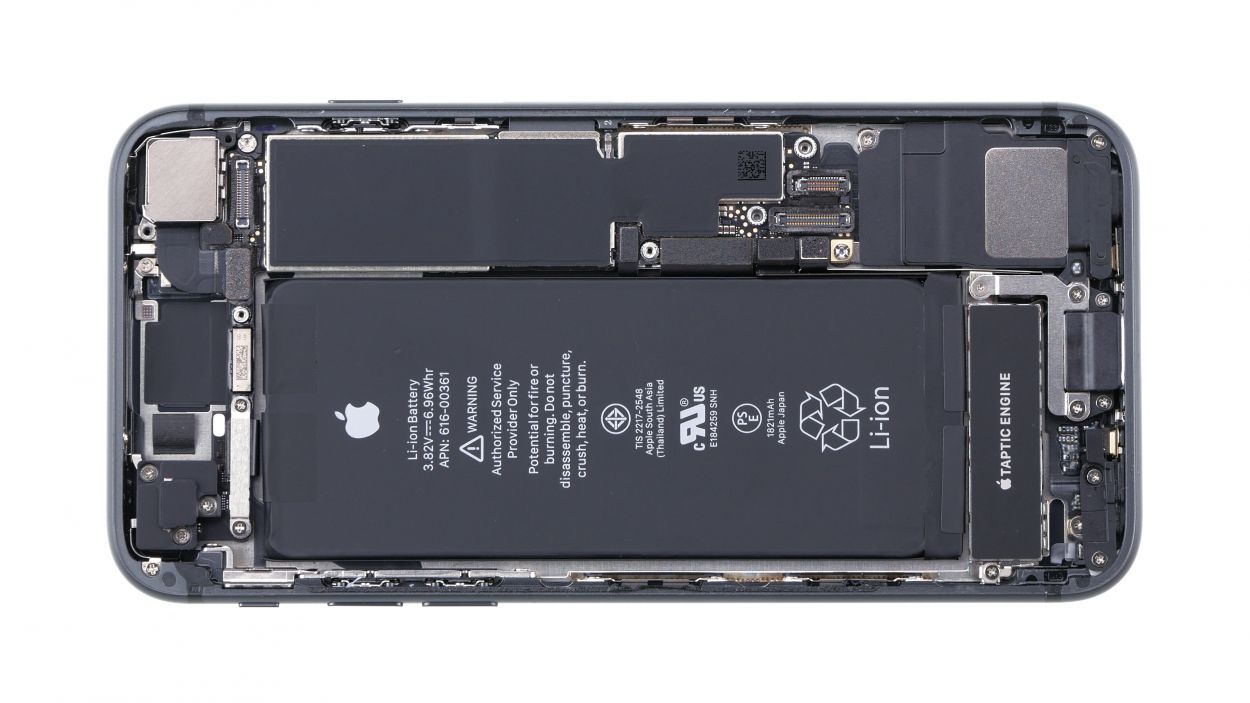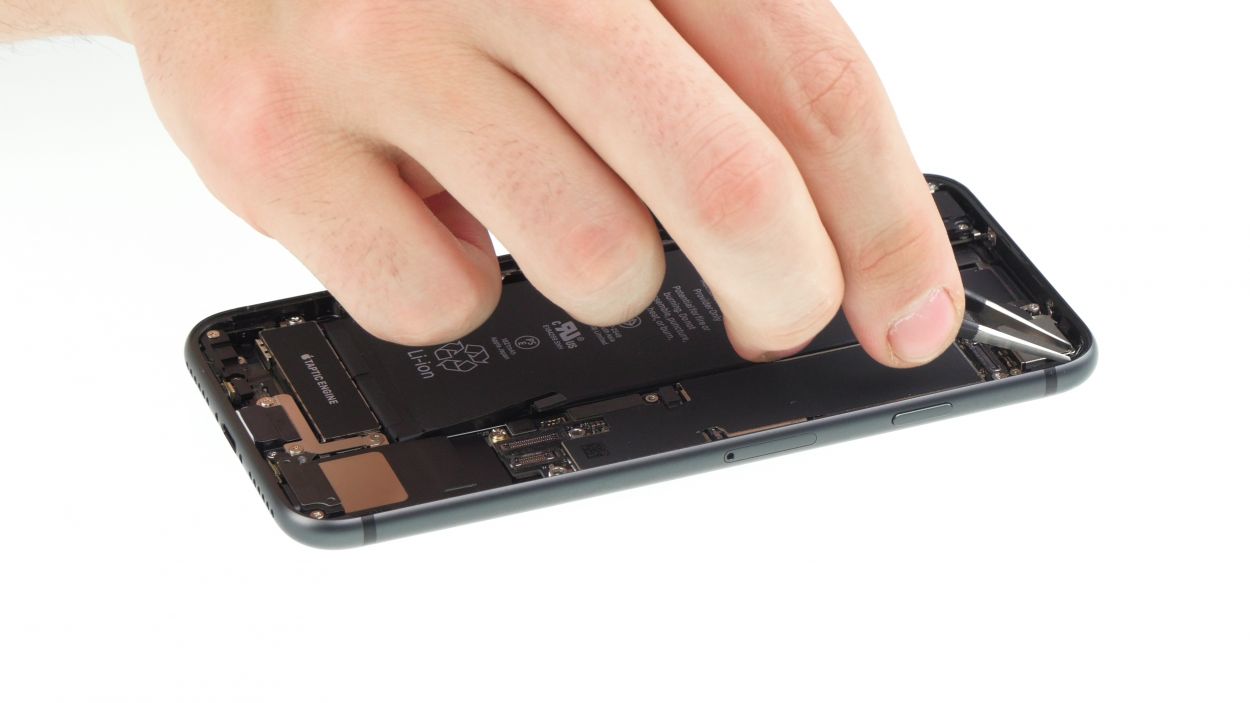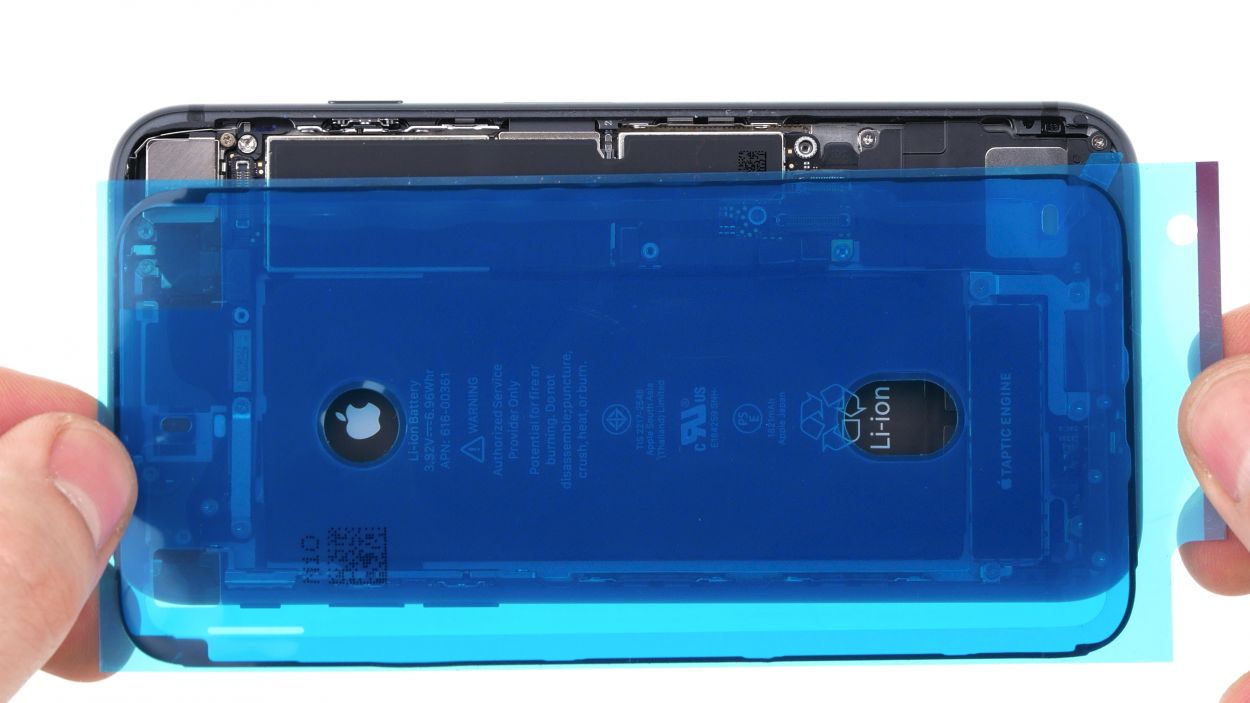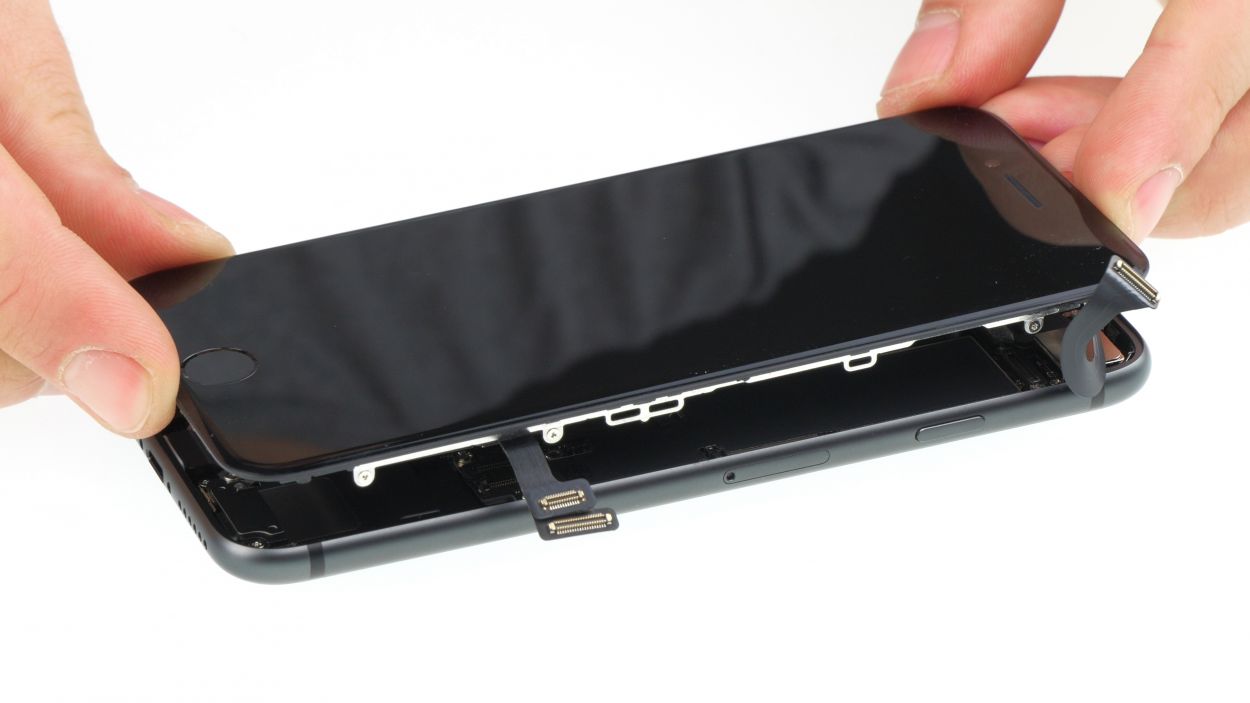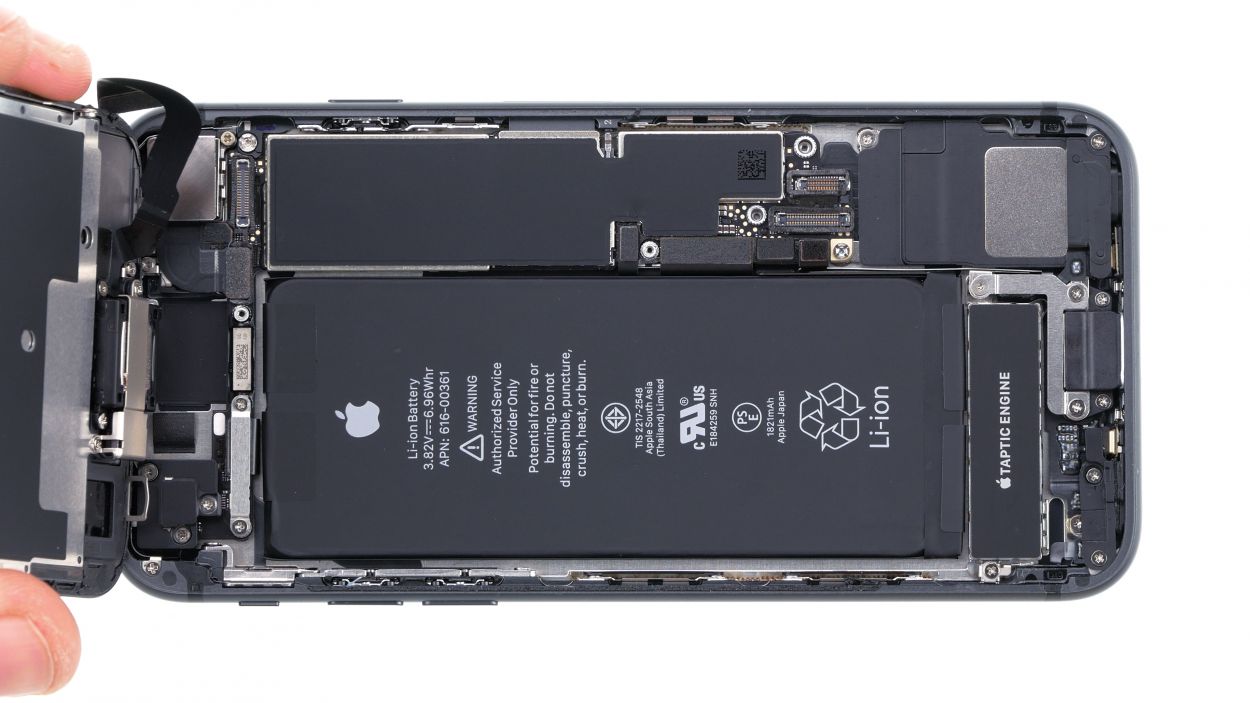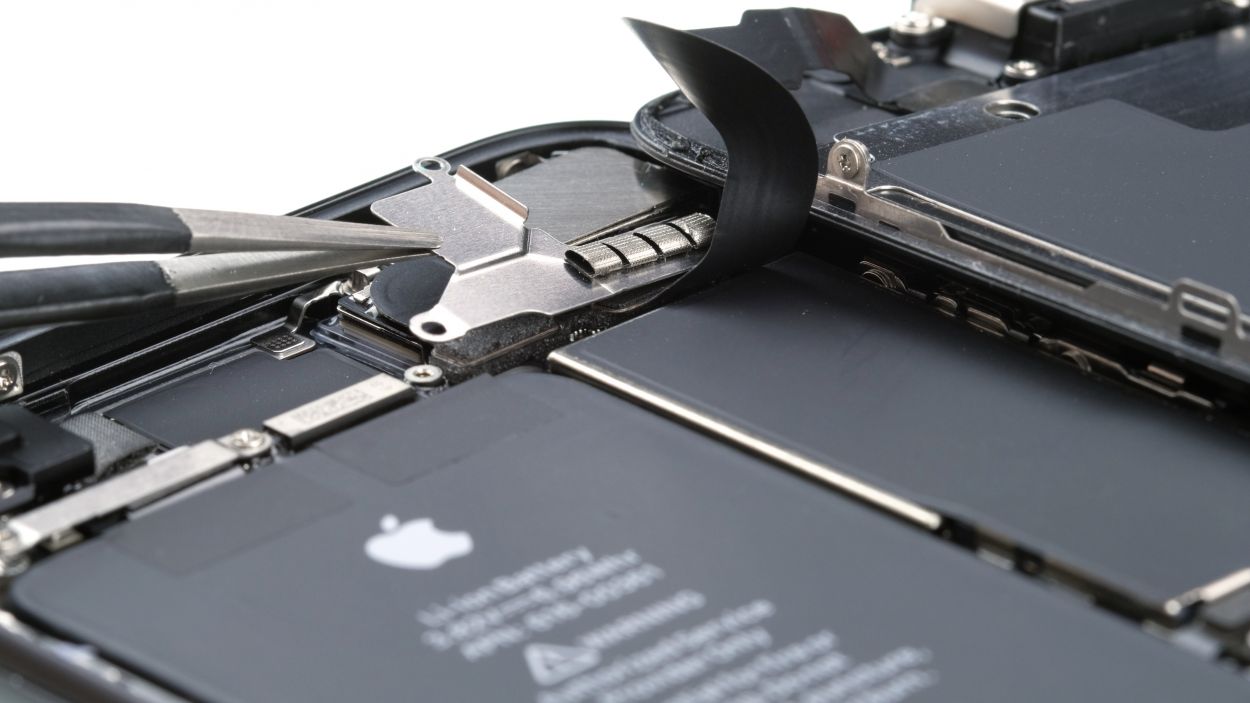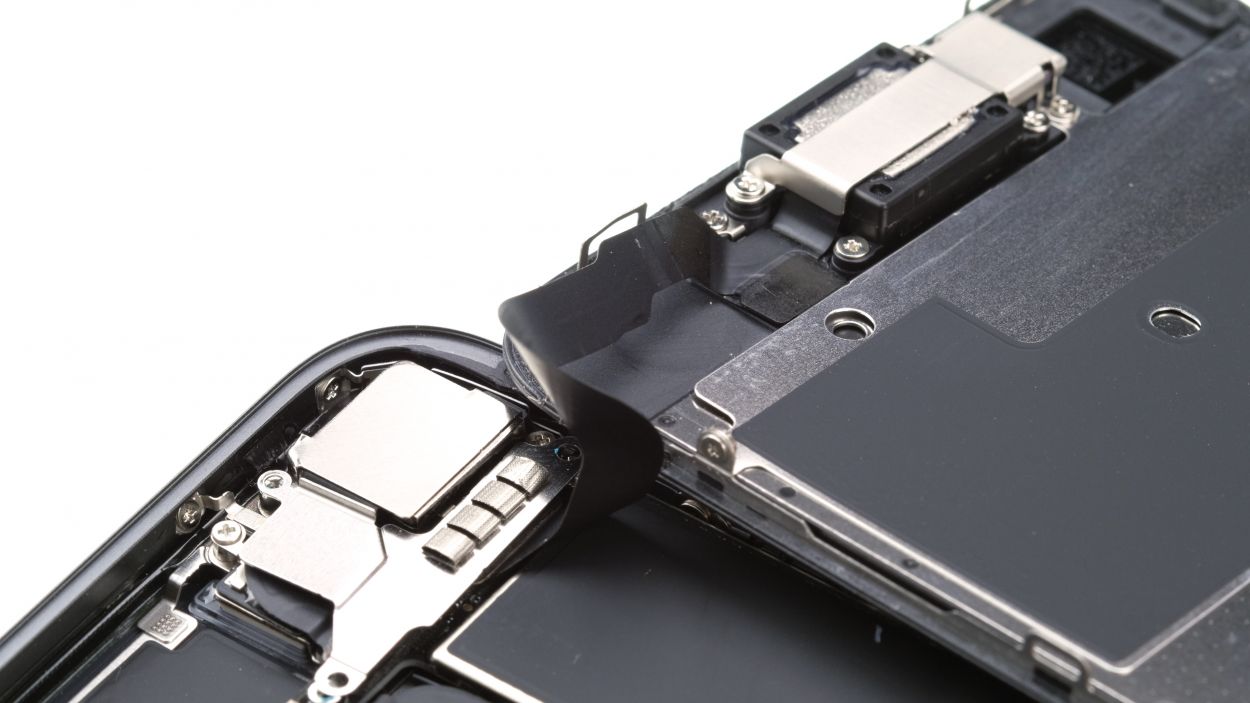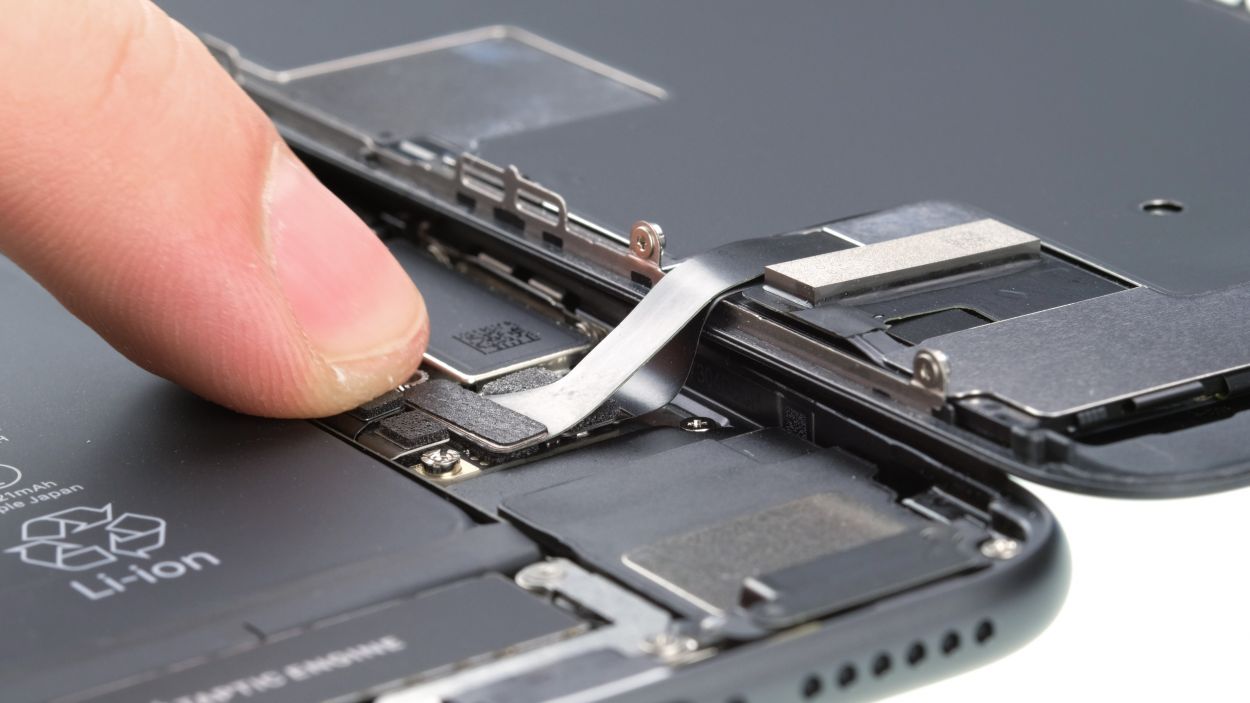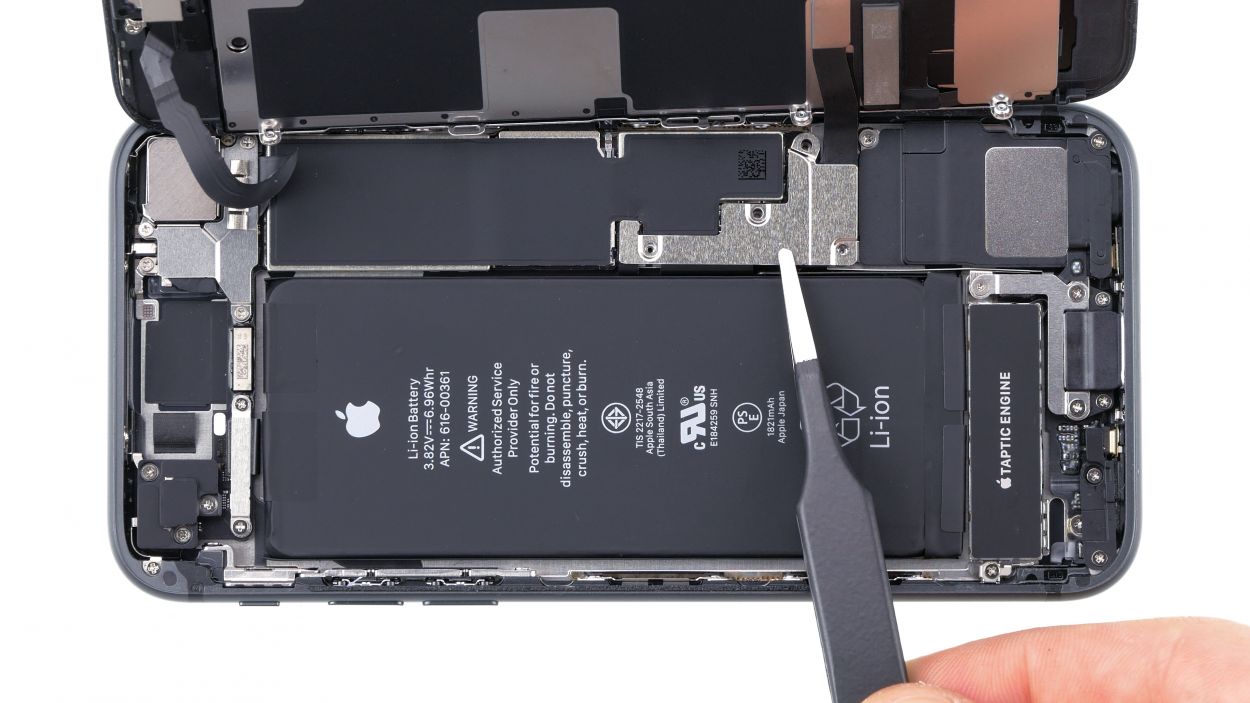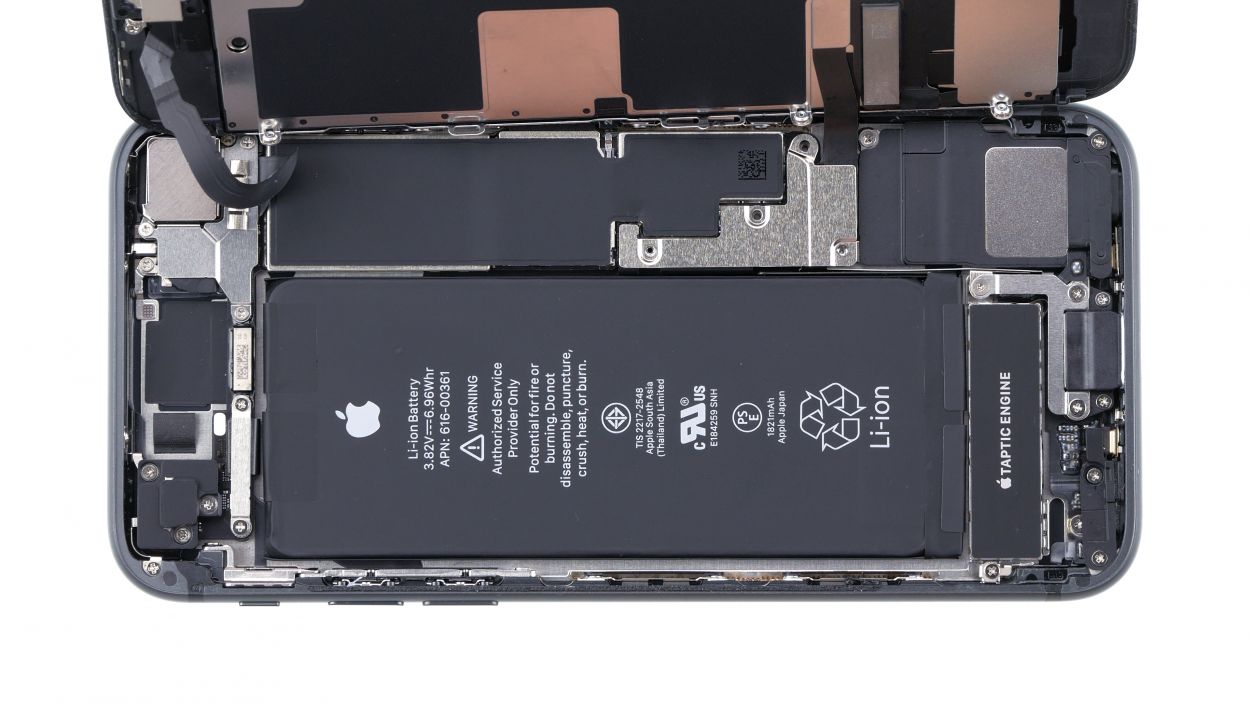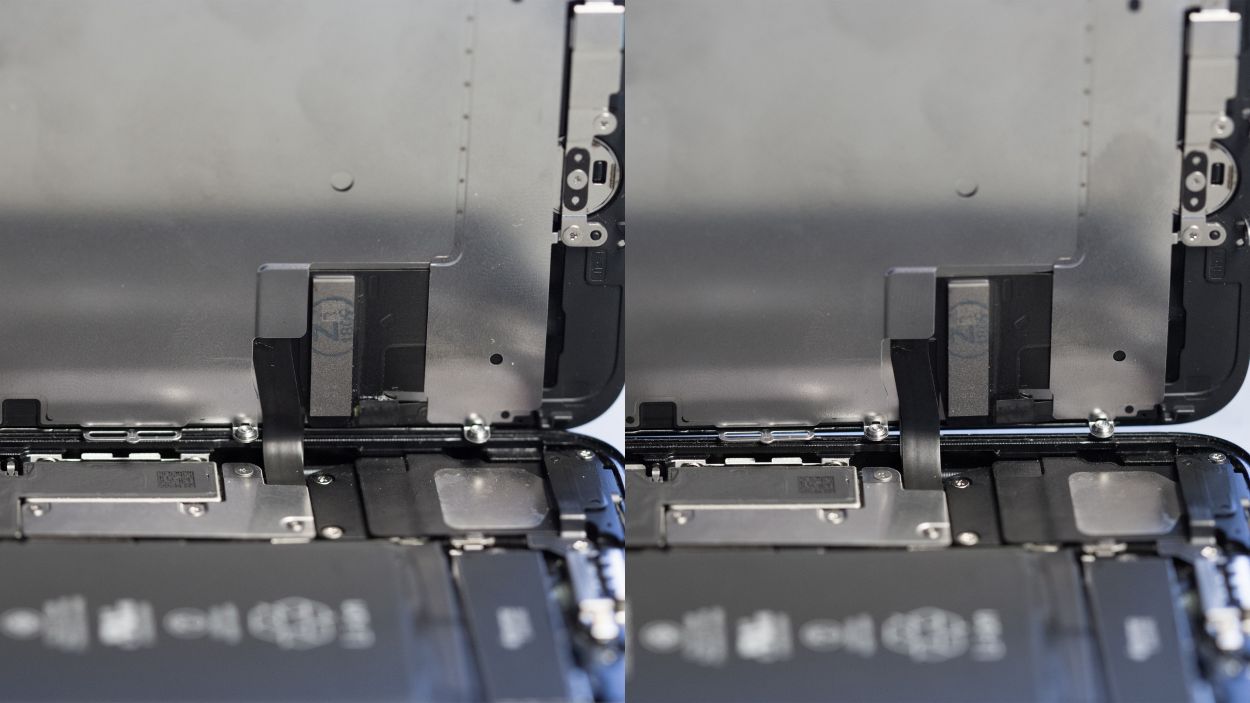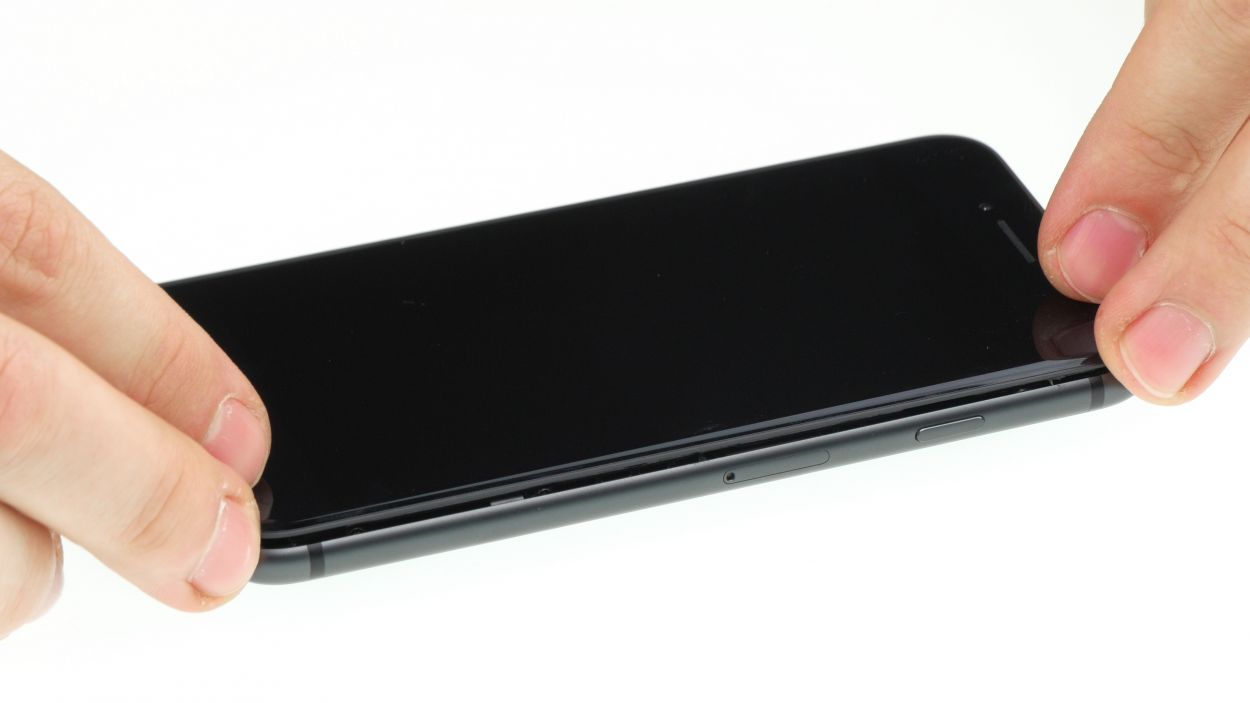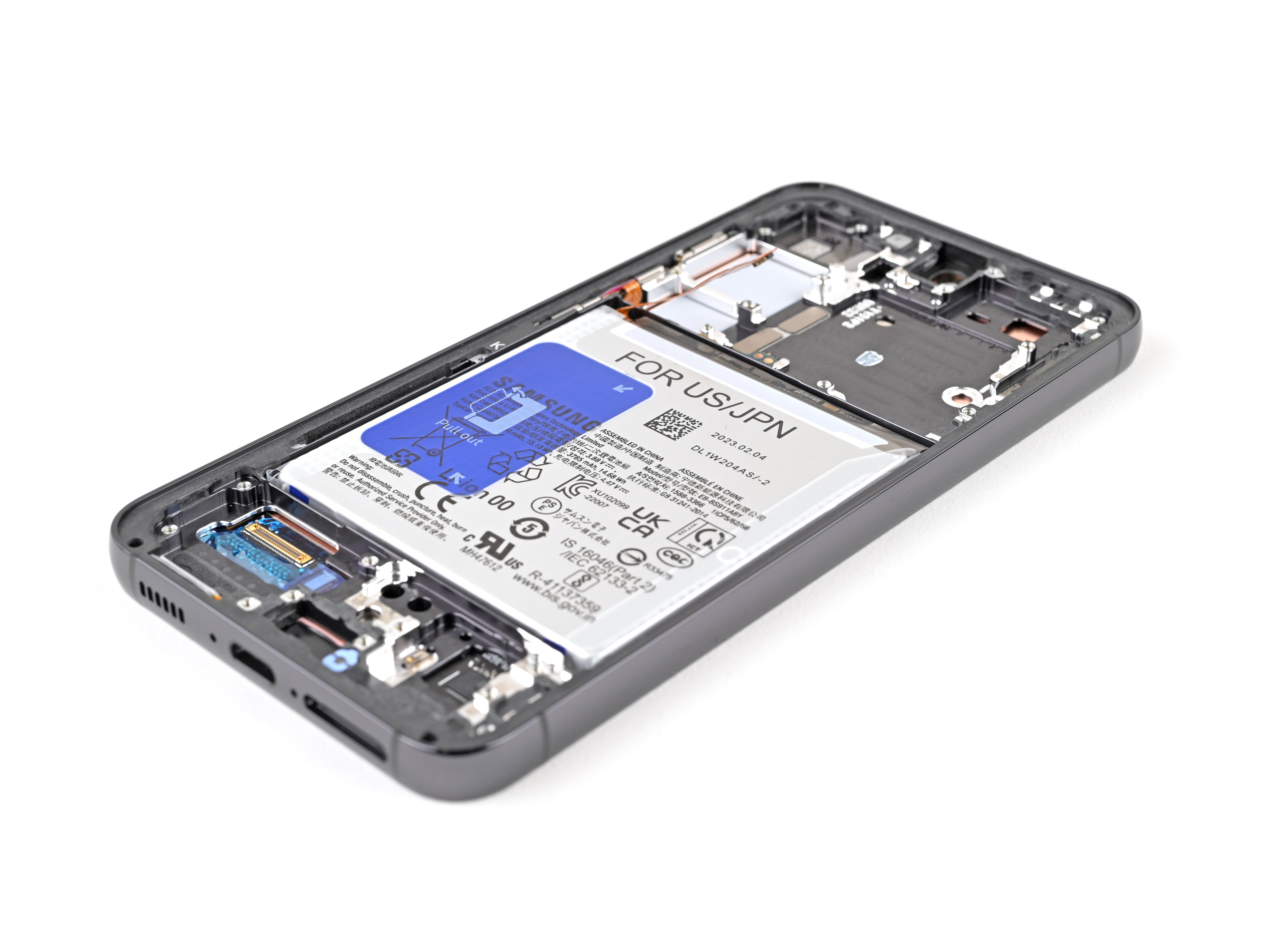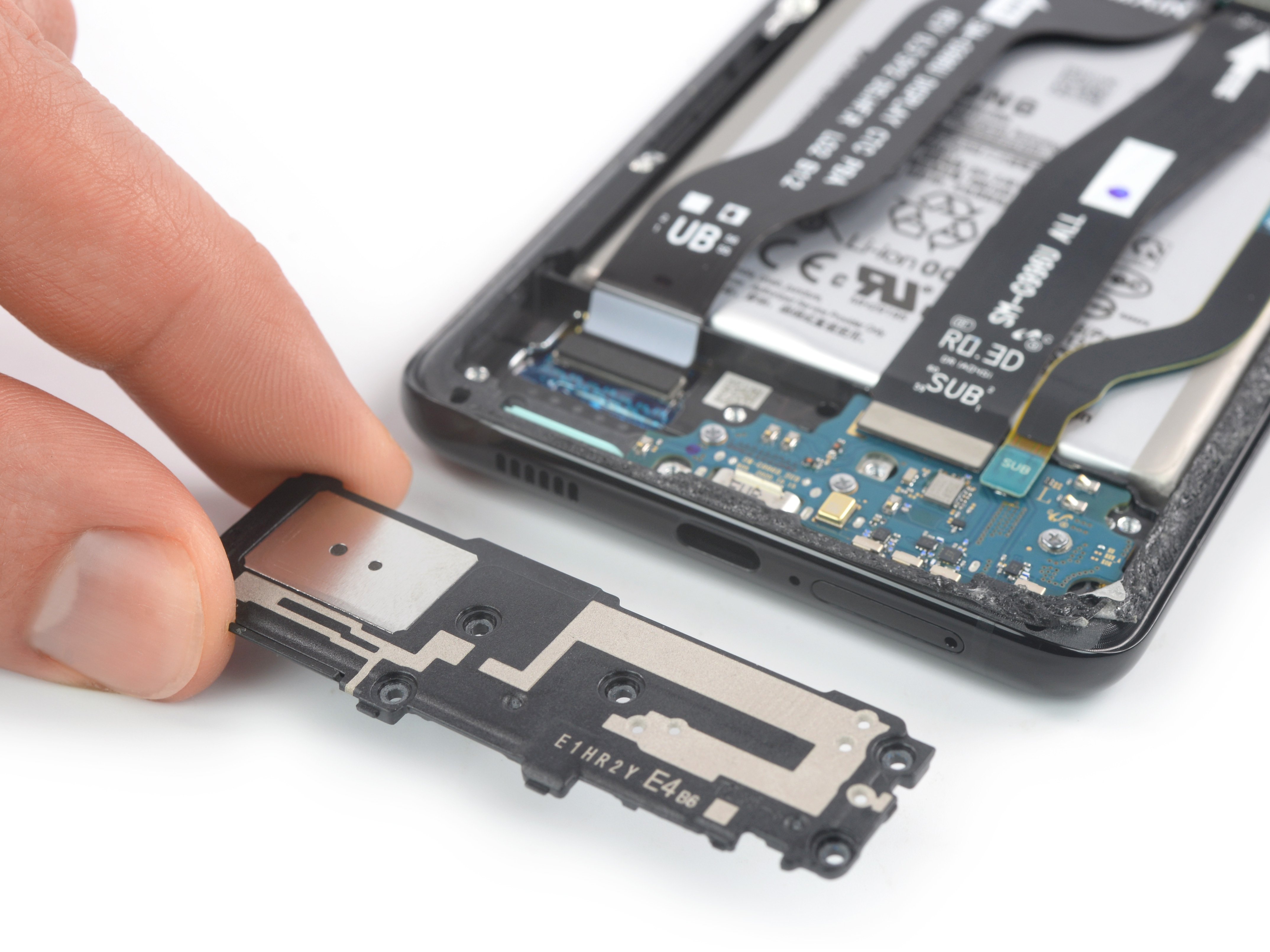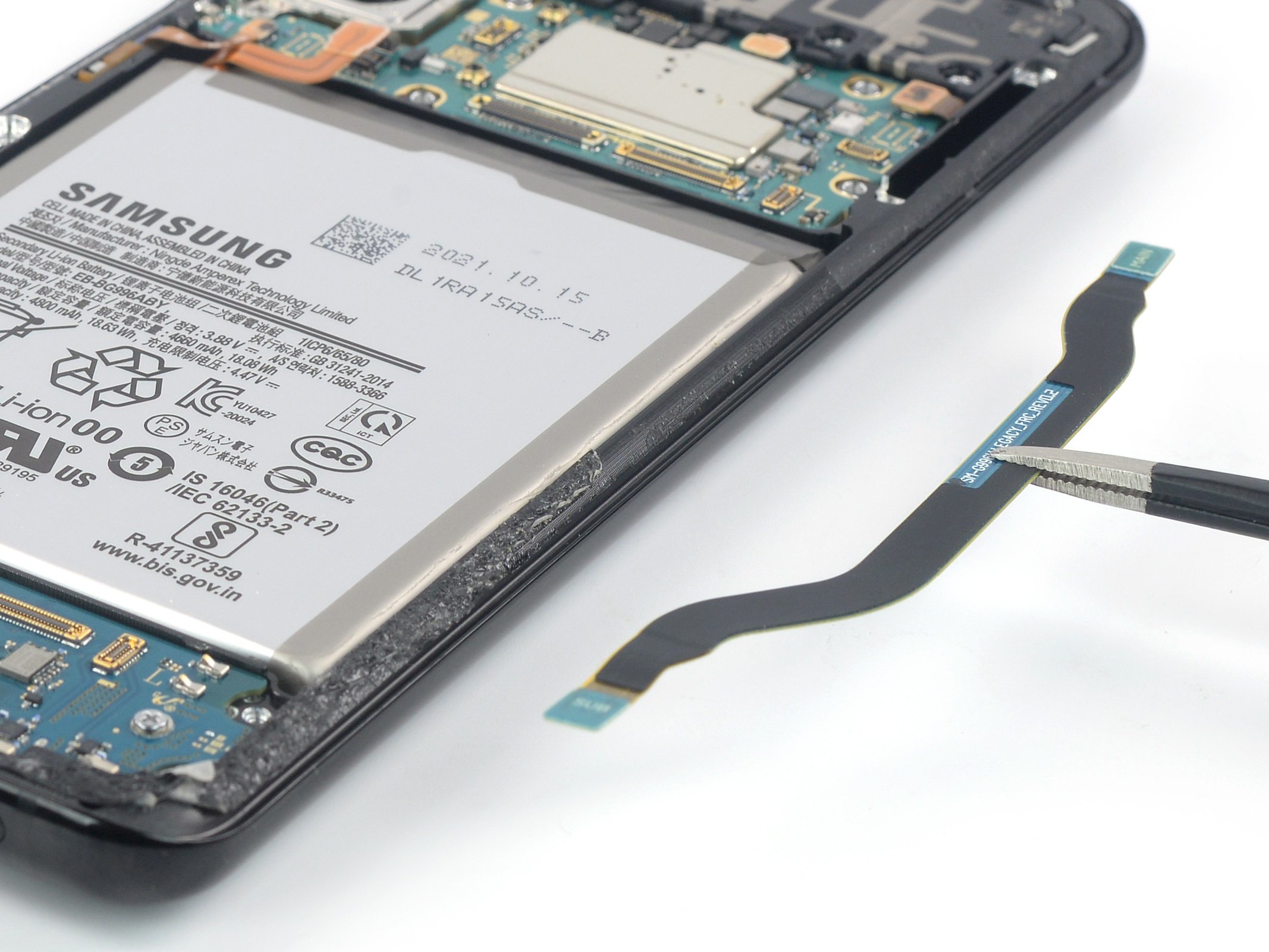DIY Guide to Replace Logic Board in iPhone SE (2nd generation)
Duration: 90 min.
Steps: 26 Steps
Ready to tackle that logic board removal on your iPhone? Great! In this guide, we’ll walk you through the process step by step, making it easy for you to do it yourself. You’ll notice we’ve borrowed some photos from the iPhone 8 manual since the two models are nearly identical. Don’t worry, all the steps are just as applicable to your iPhone SE (2nd generation). So, roll up your sleeves and let’s get that logic board out! Good luck, you’ve got this!
Step 1
– First things first, power down your iPhone SE (2nd generation) to keep it safe from any mishaps during the repair. Just press and hold that standby button until the “Power off” slider pops up.
– Slide that slider from left to right, and in about ten seconds, your iPhone will be completely off. Easy peasy!
Step 2
– Using your trusty Pentalobe screwdriver, let’s tackle those two Pentalobe screws sitting pretty on either side of the Lightning connector. Once you’ve got them out, toss those little guys into your screw storage box so they don’t wander off on their own!
2 × 3.4 mm Pentablobe
To keep all those tiny screws and parts from disappearing into the abyss, we suggest grabbing a screw storage box. An old sewing box can do the trick! We also recommend using a nifty magnetic pad to lay out your components just like you found them in your phone. This way, you’ll know exactly where each screw belongs, making reassembly a breeze!
Step 3
When warming up your device, remember: it should feel just right! You want it warm enough to work with, but not so hot that you can’t touch it comfortably. Keep it cozy!
– First off, let’s give your iPhone SE a comfy spot on a soft, clean surface so it doesn’t get any scratches while we lift that display.
– Now, since the display is all snugly glued to the edges, we need to warm it up a bit to make it easier to pop off. Grab your trusty heat gun or even a regular hairdryer, and gently wave it over the edges of the display from the outside. Just a little warmth will do the trick!
Tools Used
- heat gun to heat parts that are glued on so they’re easier to remove.
In most cases, you can also use a hairdryer.” rel=”noopener”>Heat gun
Step 4
– Stick that suction cup on the display right above the home button and give it a gentle pull upwards. As you lift the display screen, you’ll create a tiny gap between the aluminum and display frames, making it easier to work your magic!
Opening up your iPhone SE (2nd generation) means waving goodbye to that sweet IP67 dust and splash protection warranty. So, keep your phone safe and sound!
Tools Used
Step 5
Keep it cool and don’t stretch your display beyond 180° while it’s still plugged in—those flex cables are delicate and don’t appreciate the extra workout!
– Now, gently nudge the display upwards with your trusty plectrum to release those lugs from the aluminum frame. You’re almost there!
– Next, swing the display open towards the standby button. Just lean it against something sturdy to keep those delicate flexible cables from overstretching. You’ve got this!
Step 6
– Grab your Phillips screwdriver and gently loosen those four screws holding the contact cover in place. Once they’re nice and loose, use your tweezers to carefully lift it out of your device. Easy does it!
– Next up, it’s time to disconnect the battery contact. Just slide a plastic spudger underneath the plug and lift it off. Remember, we always go for a plastic spudger for this kind of job!
2 × 2.6 mm Phillips
2 × 1.0 mm Phillips
Kick off your repair by disconnecting that battery connector right away! This little step is a game-changer—it keeps short circuits at bay and makes sure your phone doesn’t accidentally come to life while you’re working on it. Safety first, right?
In this guide, we’re showcasing some snaps from the iPhone 8. While the battery connector on the iPhone SE (2nd generation) might have a slightly different look, rest assured it’s hanging out in the same spot as in your device.
Step 7
– With your trusty plastic spudger in hand, it’s time to gently pry off those two connectors that are all snug and cozy with the display (you’ve got the display and home button connectors here).
Tools Used
Step 8
3 × 1.0 mm Phillips
– Grab your trusty Phillips screwdriver (PH00) and loosen those three little screws holding the cover over the FaceTime connector. You’re doing great!
– Now, take your spudger and gently pry the FaceTime connector away from the board. Nice and easy!
– With that done, it’s time to say goodbye to the display. You can remove it completely now. Awesome job!
Step 9
1 × 2.9 mm Phillips
1 × 3.0 mm Standoff
While there are specialized screwdrivers designed for those tricky internal thread screws, don’t sweat it! A regular, slim slotted screwdriver will do the job just fine. You’ve got this!
– Time to get your screwdriver out! Unscrew those two little screws that are holding the iSight camera bracket plate in place. Once you’ve got them off, set that bracket plate aside like a pro!
Step 10
1 × 1.1 mm Phillips
1 × 2.7 mm Phillips
– First up, let’s tackle those screws holding the bracket plate right above the standby and volume button connector. Unscrew them with a smile!
– Now, gently coax the connector away from the logic board using your trusty spudger. Take your time, and be careful!
Step 11
2 × 1.2 mm Phillips
2 × 1.0 mm Phillips
1 × 2.5 mm Phillips
1 × 1.4 mm Phillips
One of those sneaky screws is cozied up on the side of the back cover. Keep an eye on it!
– First, let’s unscrew those four Phillips screws from the plastic bracket. This will make it super easy to lift that bracket out later on!
Step 12
1 × 1.3 mm Phillips
1 × 1.2 mm Phillips
– First, let’s get those Phillips screws out that are holding the Wi-Fi antenna in place. You’ve got this!
– Next up, grab your trusty plastic spudger and gently pry the antenna connector off the board. Take your time!
– If the antenna is feeling a little stubborn, warm it up with a bit of hot air and slide a flat, stable lever tool underneath. A steel spatula works wonders here!
– Once everything is nice and loose, you can easily lift the antenna out of your iPhone SE. You’re doing great!
Step 13
– Grab a SIM tool or a trusty paperclip to pop out that SIM card tray from your phone. Just give a gentle push into the tiny hole on the tray and watch it slide out!
Tools Used
Step 14
1 × 2.4 mm Standoff
1 × 2.1 mm Standoff
1 × 1.6 mm Phillips
Just a heads-up! That Phillips screw is playing peek-a-boo behind a sticker (check out our photo for a sneak peek).
– Loosen up those three screws keeping the logic board snug in its place. You’ve got this!
– With the screws loosened, gently lift out the logic board. Just a heads-up, there’s a little plastic holder for a screw next to the two holes for the iSight camera, sitting right above the logic board. Easy peasy!
Step 15
1 × 2.4 mm Standoff
1 × 2.1 mm Standoff
1 × 1.6 mm Phillips
– Carefully place the logic board back in its cozy spot. Make sure that the camera bracket is snugly positioned above the board.
– Now, tighten those screws to keep everything secure and in place!
Step 16
If the holder isn’t sliding in like a dream, give that logic board another look to make sure it’s in the right spot. You’ve got this!
– Gently slide that SIM card holder back into its cozy little spot on the device frame. You’re almost done!
Step 17
1 × 1.3 mm Phillips
1 × 1.2 mm Phillips
– Slide the Wi-Fi antenna back into your iPhone SE’s cozy little home.
– Secure the antenna mount to the case frame with a few screws—nice and snug!
– Gently press down to make sure that adhesive film sticks like it should.
– Now, give that antenna connector a friendly attach!
Step 18
1 × 2.5 mm Phillips
1 × 1.4 mm Phillips
2 × 1.2 mm Phillips
2 × 1.0 mm Phillips
– Place that little connector piece back where it belongs and give it a good twist to secure it tight.
– Now, let’s pop in the plastic bracket and screw it down nice and snug too!
Step 19
1 × 1.1 mm Phillips
1 × 2.7 mm Phillips
– Reconnect the standby and volume button connector with a little finesse.
– Reattach the bracket plate over the connector and secure it with those screws.
Step 20
1 × 2.9 mm Phillips
1 × 3.0 mm Standoff
– Gently slide the camera back into its designated spot and give it a firm press to make sure it’s snug as a bug.
– Next, connect the camera connector to get everything linked up nicely.
– Finally, pop the cover plate back on and tighten those screws to keep everything secure.
Step 21
After you’ve opened up your iPhone and added a shiny new adhesive frame, it’s back to being protected from dust and splashes! Just a heads-up, it’s not quite 100% waterproof, so keep that in mind!
The corners of the adhesive frame are like little guides, helping you perfectly align the back cover. It’s all about that snug fit!
– First, let’s clear away any leftover adhesive on the metal frame and display. This way, the new adhesive frame can fit like a glove! Tweezers or a spudger will be your trusty sidekicks here.
– Next, take a moment to align the adhesive frame on the back cover of your iPhone SE. Getting it just right will ensure everything sits perfectly in place!
Tools Used
Step 22
3 × 1.0 mm Phillips
– Set that display upright on the upper case frame and connect the FaceTime connector to the logic board. You’re doing great!
– Now, gently lean the display against the case frame. Almost there!
– Slide the bracket plate back over the FaceTime connector and secure it with those three Phillips screws. Nice and snug!
Step 23
– Connect the home button and display connectors to the logic board with a little flair. You’ve got this!
Step 25
Wrong position
Right position
Before you seal up your iPhone SE (2nd generation), give that cable a quick check! If it’s not snug in its spot, you might end up with some funky spots on your display. Use our handy photo as a guide to ensure that chip is in the right place. You’ve got this!
Step 26
2 × 3.4 Pentalobe
– Grab your Pentalobe screwdriver and let’s get those two Pentalobe screws on either side of the Lightning connector secured back into the rear case of your iPhone SE. Make sure they’re nice and tight, and your device will be ready to roll!
Tools Used
